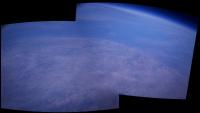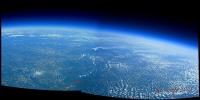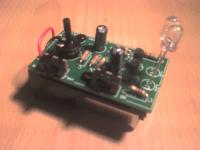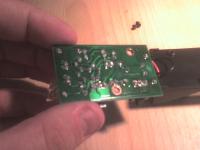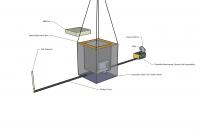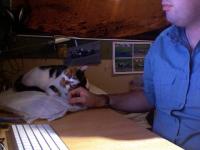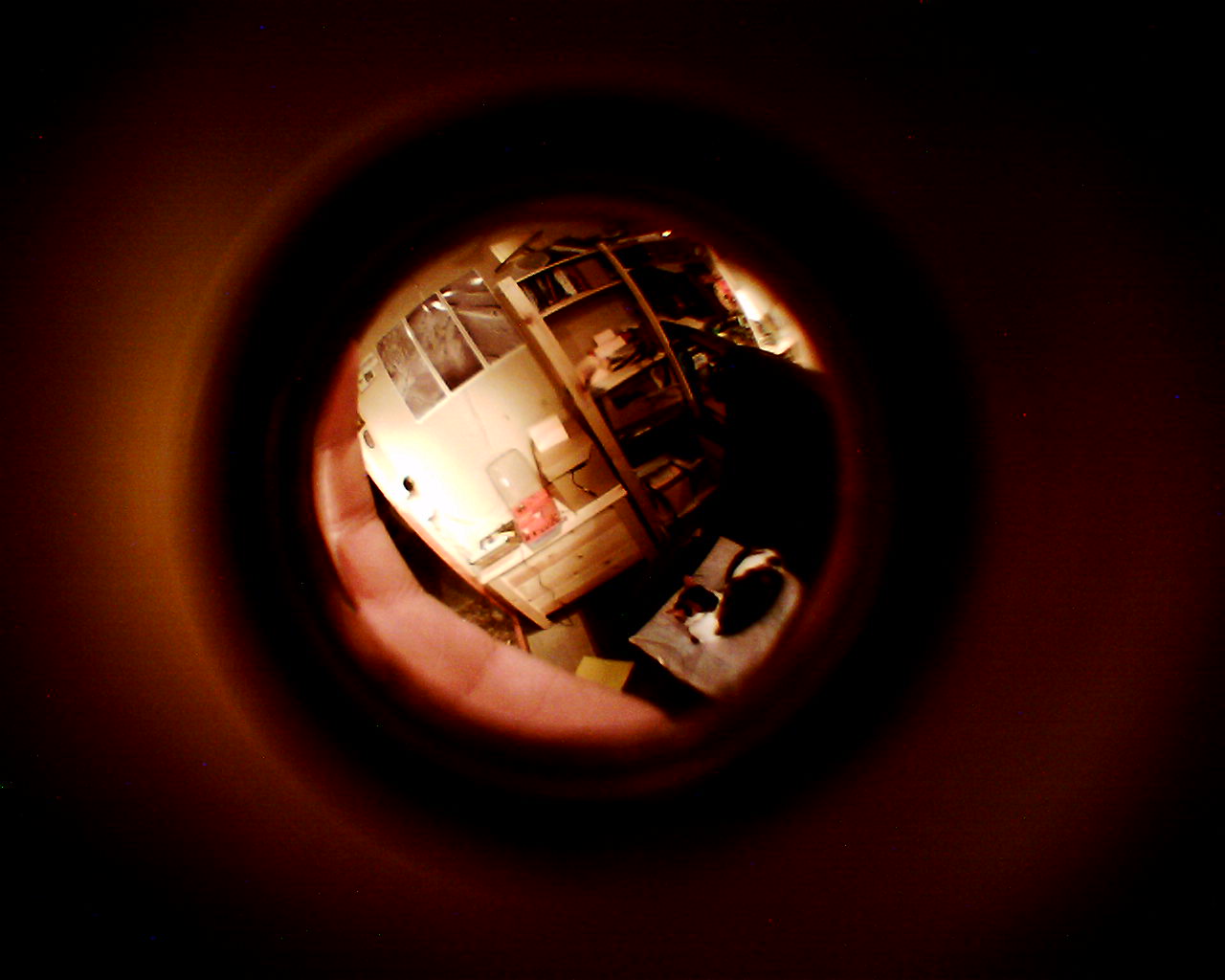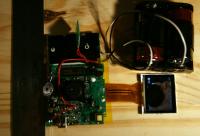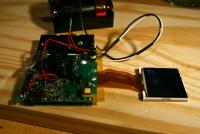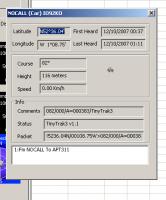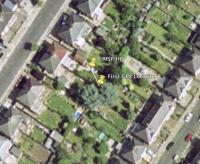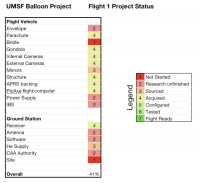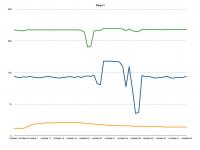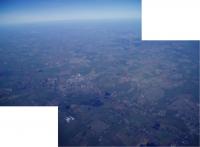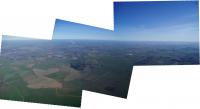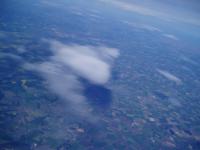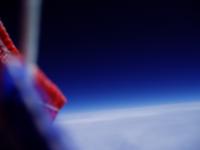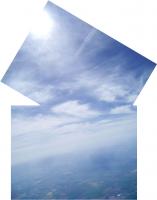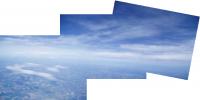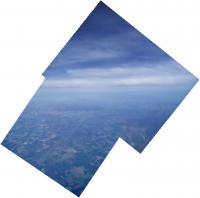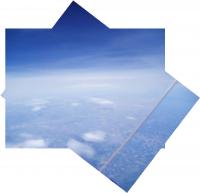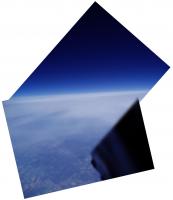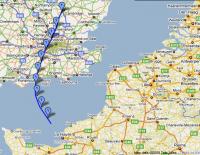Printable Version of Topic
Click here to view this topic in its original format
Unmanned Spaceflight.com _ Private Missions _ High altitude balloon payload
Posted by: djellison Sep 26 2007, 11:16 PM
http://www.unmannedspaceflight.com/index.php?showtopic=4584&st=20&start=20
We began talkin about a UMSF balloon - and who know what might happen if enough people think about something hard enough, thoroughly enough and long enough.
How's about this as a starting point.
http://vpizza.org/%7Ejmeehan/balloon/ with http://www.chem.hawaii.edu/uham/part101.html as an important regulatory start point (I'm going to look up the UK regs for this as well)
http://www.srcf.ucam.org/%7Ecuspaceflight/nova1launch.html is also very impressive - all done in the UK
This http://www.makezine.com/blog/archive/2007/03/diy_space_make_video_podc.html is particularly impressive - I like the multiple-cameras slant.
Anyway - thought I'd get a thread going - this is an idea I like too much to let it gather dust in a corner - the one thing that I think would be nice to achieve is self-portraiture of some sort - think Beagle 2's WAM etc....perhaps in a corner of the FOV of one of/the imaging system. What sort of limit's should we set ourselves? 1kg 10x10x20cm? (sort of 2U Cubesat-on-a-diet budget)
Doug
Posted by: helvick Sep 27 2007, 06:32 AM
I'm definitely on board for this but I'm in the middle of some chaos as I'm moving so my input may be patchy over the next couple of weeks. Putting up shelving, rewiring lights, fitting out kitchens etc is sort of top of my list at the moment.
I think it's a very good idea to put a stake in the ground for mass budget - 1kg sounds about right but obviously it would need to be confirmed against the carrying capacity of the balloon(s). I'm not 100% sure that there is a real need to set strict constraints on physical dimensions but I think going with the 2U cubesat framework is a good starting point and thermal insulation will almost certainly mean the payload will be a very compact box.
I'd love to see a shot of a UMSF logo against a deep black background with the curve of the upper atmosphere just below it - that's definitely got my vote for #1 mission success criterion. ![]()
Posted by: Paolo Amoroso Sep 27 2007, 09:39 AM
A mirror might be useful for this.
Paolo Amoroso
Posted by: djellison Sep 27 2007, 10:06 AM
That's what WAM means - Wide Angle Mirror - you can see it above one of the two cameras here -
http://www.beagle2.com/download/number9-mid.jpg
and folded to one side here
http://www.beagle2.com/download/number7-mid.jpg
Doug
Posted by: Paolo Amoroso Sep 27 2007, 01:34 PM
Thanks. MTA: Mind The Acronym.
Paolo Amoroso
Posted by: djellison Sep 27 2007, 02:15 PM
A starter for 10:
Powershot A570IS (IS would be a good thing on a rough ride to near-space)
89.5 x 64.3 x 42.8mm - 175g's.
It takes two AA's. NiMH's are typically 230g's a pair - and produce a total of 1.2v x 2500mAh - 3 whrs. - the same as the optional NB-3AH cells. In terms of Whrs/kg - LiPoly gives double the performance of a good pair of NiMH's - perhaps enough to accomodate TWO similar cameras. I would like to see something near 4 hours at 4 shots per minute - 1000 photographs. That would require somewhere around 9 whrs of power.
Doug
Posted by: dvandorn Sep 27 2007, 03:26 PM
That sounds like a good definition. Just remember, though, that in NASA-ese, you always capitalize Mission Success Criteria -- so that, if you don't meet those critera, everyone will know that You Have Failed...
-the other Doug
Posted by: helvick Sep 27 2007, 04:20 PM
Things to bear in mind.
Not all digital cameras have a time lapse \ "intervalometer" mode. Whatever models are considered have to have that capability either built in or available cheaply (in terms of mass and money) as an add on.
A reasonably wide angle lens would be nice - most Compact Digicams have a wide end that's equivalent to ~ 35mm focal length on a classic 35mmm SLR providing approximately 55x37deg FOV but some have a more useful 28mm wide end giving a ~65x46deg FOV that covers about 50% more solid angle.
Storage capacity depends very much on how new the camera is - storage above 2GB may not be possible on older SD only devices for example. 1000 7Megapixel jpg shots stored in fine mode would be just about 2GB I reckon so that would be OK (just).
I think that a 2 camera approach is a very good idea. I'm torn between having them pointed in such a way that stitched panoramas are possible versus having them pointed so that we optimize the probability of getting a wider range of individual shots.
As far as power is concerned something like http://www.tekkeon.com/site/products-mypall-specs.php would give us 40whrs for 320grammes which is probably way more than we need for just the cameras but we still have to build in some sort of tracker\GPS unit and a transmitter which will both need juice too. Taht 40whrs is probably optimistic, no doubt there are losses in the voltage conversion circuitry and we'll probably have temperature related power issues so the margin with that might not actually be all that high.
Anybody got any information on a tracker\transmitter so we can find the thing once it comes crashing back to mother earth?
Posted by: nprev Sep 28 2007, 12:10 AM
Well, here's http://www.spyville.com/gps-tracking-system.html for that; not cheap, though (US$700). It calls a cell phone with position, and can be set for time-based or event based (jars, impact) reporting. 2.5 m accuracy isn't bad, but may be overstated for straight civilian GPS; would love to find a DGPS for more precision. Battery-powered, so no additional load on the vehicle bus.
I'll look around some more.
Posted by: Juramike Sep 28 2007, 04:33 AM
This is an absolutely excellent idea.
I'll volunteer whatever feeble skills I've got. And I'll definitely kick in bucks when we start passing the hat.
[I've set my Davis Vantage Pro station (with WeatherLink datalogger) aside with a post-it note saying "Save for UMSF high-altitude balloon flight."]
-Mike
"Up, up, and awaaaayayyy...."
Posted by: ElkGroveDan Sep 28 2007, 04:46 AM
I tracked down the Sable-3 equipment. I'd say some of that would be a fine starting point due to it's proven abilities
The tracking device comes in a kit and is inexpensive:
http://www.byonics.com/microtrak/mt300.php
Here are some balloons
http://www.scientificsales.com/SearchResults.asp
Posted by: djellison Sep 28 2007, 07:40 AM
I saw 'kit' and thought 'great- I've done loads of soldering..' but if it's $10 to get it built and tested...screw it ![]()
Doug
Posted by: helvick Sep 28 2007, 08:14 AM
I'll look around some more.
The MicroTrak looks like an ideal solution and as Dan says it has the significant advantage of being proven for the purpose and the whole thing is cheap (~$100) and weighs less than a couple of ounces. Receivers for a tracking team (or teams) seem to be dirt cheap - http://www.jancorver.org/en/ombouw/kf161/aprs.htm and it looks as if linking this into a PC\laptop is also cheap and straightforward if we wanted to do that.
If we were happy to use a cellular phone type device for tracking then I can build a solution using any Windows Mobile\Pocket PC Phone Edition device with an internal GPS ( I have http://www.expansys.com/p.aspx?i=130765 that's got a broken power connection that I'm happy to donate to the cause if I can fix it ) that is certainly good for <5m accuracy which is more than good enough. It will probably need additional power to keep its GPS and cellular radios running for the sort of time we're talking about. I don't think it would be able to give anything like live telemetry at any serious altitude (a couple of thousand m) but it's no problem to get it to log to an SD card and send what it can over GPRS when its available so it might not be a bad approach. Total mass without the battery is about 190g. It's even got a very lousy cell phone camera that we could use to get some additional pictures as a backup.
Posted by: djellison Sep 28 2007, 11:38 AM
The smartphone is a genius idea - it would make an excellent secondary system that's virtually stand alone. GPRS'ing lat/long - ESPECIALLY once it's landed again would be GENIUS because a VHF transmitter from ground level is unlikely to get very far. We can call it the Independant Backup System. IBS ![]()
Just because I like getting my hands dirty - I'm going to look at foam insulation at lunch time and make a gondola. Not to fly - just to make something cool.
Doug
Posted by: AndyG Sep 28 2007, 12:06 PM
Here's a more-or-less self-explanatory table of altitudes with some notes. The only odd column here is the one called deg - this is the dip from the local horizontal at the listed altitude to the Earth's horizon. Higher the dip, the better the curve!
There's a few potential Mission Success Criteria here that would be good to see: personally, I think that the old tropopause feels almost too achievable with off-the-shelf weather balloons. I'd be, well, tempted to aim just a little higher...not too much, but still...
km deg tempC Pa kg/m3 notes
53 7.4 +27.3 60 0.7
52 7.3 +24.3 67 0.8 51.82km - highest unmanned balloon flight
51 7.2 +21.3 76 0.9
50 7.2 +18.3 85 1.0 800km to horizon
49 7.1 +15.3 96 1.2
48 7.0 +12.3 108 1.3
47 6.9 +09.3 121 1.5
46 6.9 +06.3 137 1.7 Shuttle SRB burnout
45 6.8 +03.3 155 2.0 SpaceShipOne engine cutoff
44 6.7 +00.3 175 2.2 750km horizon
43 6.6 -02.6 198 2.6
42 6.6 -05.6 225 2.9
41 6.5 -08.6 256 3.4
40 6.4 -11.6 291 3.9 40.00 km - QinetiQ (failed) manned record attempt
39 6.3 -14.6 332 4.5
38 6.2 -17.6 379 5.2
37 6.2 -20.6 434 6.0
36 6.1 -23.6 497 6.9
35 6.0 -26.6 570 8.1 34.67km - Highest manned balloon flight
34 5.9 -29.6 654 9.4 1% reduction in gravity
33 5.8 -32.5 753 10.9
32 5.7 -35.5 869 12.7 Mars surface pressure
31 5.6 -38.5 1003 14.9 Above 99% of the atmosphere
30 5.6 -41.5 1161 17.5
29 5.5 -44.5 1346 20.5
28 5.4 -47.5 1564 24.2
27 5.3 -50.5 1821 28.5
26 5.2 -53.5 2124 33.7
25 5.1 -56.5 2523 40.6
24 5.0 -56.5 2952 47.5
23 4.9 -56.5 3453 55.6 FAI definition for the lower edge of near space
22 4.8 -56.5 4040 65.0
21 4.7 -56.5 4727 76.1 Above 95% of the atmosphere
20 4.5 -56.5 5531 89.0 500km to horizon
19 4.4 -56.5 6471 104.1
18 4.3 -56.5 7571 121.8
17 4.2 -56.5 8857 142.5
16 4.1 -56.5 10363 166.7 Above 90% of the atmosphere
15 3.9 -56.5 12125 195.1 SpaceShipOne release altitude
14 3.8 -56.5 14185 228.2
13 3.7 -56.5 16597 267.0
12 3.5 -56.5 19418 312.4
11 3.4 -56.4 22707 365.2 Approximate height of Tropopause
10 3.2 -49.9 26516 414.0 Commercial Airliners
09 3.0 -43.4 30827 467.7
08 2.9 -36.9 35688 526.6
07 2.7 -30.4 41152 591.0
06 2.5 -23.9 47274 661.2
05 2.3 -17.4 54114 737.7 250km to horizon
04 2.0 -10.9 61734 820.7
03 1.8 -04.4 70201 910.7
02 1.4 +02.1 79584 1008.1
01 1.0 +08.6 89958 1113.3 ~900m - Montgolfier Brothers, 1783
00 0.0 +15.0 101401 1226.6
Posted by: jamescanvin Sep 28 2007, 12:41 PM
Great info AndyG.
Looking at some of the other folk who have done stuff like this, 30 - 35km seems to be reasonable.
Surely we've got to be aiming for the 32km 'Mars surface pressure' mark. ![]()
J
Posted by: djellison Sep 28 2007, 12:57 PM
At that level it's a little bit about luck - but I'd say the 30km, 100kft, 10% air pressure, mars air pressure type level is a sensible ultimate goal. Maybe not first time around - but eventually.
Doug
Posted by: ustrax Sep 28 2007, 01:43 PM
Hey Doug...what do you think of this first approach to a possible name anf badge for the project?... ![]()
On following opportunities we could follow this policy and use our beloved ones names...I'm sure each launch would have a distinct personality... ![]()
Posted by: jamescanvin Sep 28 2007, 02:04 PM
Hopefully even with just one camera some nice panoramas will be possible.
Some quick tests:
Nova - images taken 15 seconds apart - altitude change 300ft - altitude 100,000ft
Even at low altitudes and with large time intervals this can still be done.
SABLE-3 - images taken 1 minute apart - altitude change 800ft - altitude (above ground) 10,000ft
If we had two cameras I'd vote for one pointing horizontally and one pointed down at 45 degrees and turned 90 degrees 'portrait', which should give maximum coverage.
It may take a while to sort through the images but with a couple of cameras like this firing quite frequently some pretty spectacular stuff should be possible.
James
Posted by: nprev Sep 28 2007, 02:05 PM
Nice logo, ustrax! ![]()
Just a general engineering note based on AndyG's terrific table: need to determine an optimum rate of climb (ideally, maximized) in order to minimize thermal effects on the electronics, unless the payload will be environmentally controlled. Major trade-off in all areas is, of course, that more payload weight equals less achievable altitude...
Posted by: djellison Sep 28 2007, 02:23 PM
Payload wouldn't be thermally 'controlled' per.se - but something like a foam (there's 3cm thick foil covered foam available at my DIY store) cube which would thermally insulate it from the cold - and then the electronics inside would hopefully keep it fairly warm simply by using up the Whr's.
I knew someone would start thinking of logo's and names before we got too far ![]()
Doug
Posted by: jamescanvin Sep 28 2007, 02:38 PM
One more stitching test using the SABLE-3 images. These images are fully 6 minutes and 6,400ft apart and still stitch nicely. With two cameras taking pictures 15 seconds apart and we could have 50 images within this time frame, nice. ![]()
James
EDIT: just came across this page of records for this sort of thing - http://showcase.netins.net/web/wallio/ARHABrecords.htm
Posted by: ustrax Sep 28 2007, 02:43 PM
You know how this guys are Doug... ![]()
Seing those images I can't avoid to think about something I already made reference here, I would L-O-V-E to see some video footage with sound...what are the major constraints for something of that nature?...
Posted by: djellison Sep 28 2007, 03:13 PM
Storage, Volume, Mass, Power, Money ![]() If you can find a small digital camera that can take movies of approx 2 hours onto SD card etc, and last that long on the battery, that's small enough (10 x 10 x 3 cm sort of size) and light enough (<300g) - then maybe. While movies are cool - I think I'd rather have mega-pixel stills than a lower res movie ( although both would be cool.)
If you can find a small digital camera that can take movies of approx 2 hours onto SD card etc, and last that long on the battery, that's small enough (10 x 10 x 3 cm sort of size) and light enough (<300g) - then maybe. While movies are cool - I think I'd rather have mega-pixel stills than a lower res movie ( although both would be cool.)
Real time video transmission is possible but typically not further than 5km with the transmisison power allowed by the radio spectrum laws.
Posted by: nprev Sep 28 2007, 03:57 PM
Doug
Yeah, that'd help. Main concern here is electrical connectors. Probably a good idea to seal them with ScotchGard or RTV, which in addition to adding another insulation layer to minimize thermal contraction/expansion would also prevent moisture intrusion/condensation.
Posted by: scalbers Sep 28 2007, 04:51 PM
Hi - this link has a nice high altitude photo from the Edge Of Space Sciences balloon group:
http://www.eoss.org/ansrecap/ar_030/recap13.htm
Posted by: Juramike Sep 28 2007, 04:51 PM
One possibility might be to put all the batteries in a custom battery harness which is itself inside a small thermos. That should keep them from getting too cold during the trip up. The downside will be making sure that all the connections are nice and tight.
Yet another possibility would be to put a small "box" of solar panels around any package. At least one of the panels would be pointed towards the sun and delivering power. But then you gotta deal with transformers, etc.
-Mike
Posted by: JRehling Sep 28 2007, 05:36 PM
[...]
Posted by: djellison Sep 28 2007, 05:55 PM
Actually - the altitude will be limited by the envelope which seem to always burst at 80-110kft
Doug
Posted by: nprev Sep 28 2007, 06:08 PM
Good point, Doug. However, ascent velocity is still contrained by payload weight, so it's still a significant consideration. For recovery purposes, seems like you want to get up & down as rapidly as possible in order to limit your touchdown CEP.
Posted by: dvandorn Sep 29 2007, 05:22 AM
Have y'all thought about where you'd want to fly this thing? Most of the U.S. has severe restrictions on flying any non-commercial, non-military vehicle above about 2,000 feet, and there are a lot of places where the restriction is lower than that, or where you can't fly anything. Most of this is due to airlanes, landing patterns, etc., but some has to do with laws against unlicensed surveillance.
I can't imagine Europe is a lot more open about this kind of thing -- if anything, Europe has more crowded skies than does the U.S.
And to add another inconvenient point -- even if you could launch from, say, the U.K., won't the camera pod come down several hundred miles from the launch point? There are a lot of things several hundred miles away from Britain that aren't very welcoming places for recovery of a pod -- the North Sea and the Alps are a couple that come to mind.
Just asking the obvious question I haven't seen raised yet... ![]()
-the other Doug
Posted by: Astrophil Sep 29 2007, 11:02 AM
Here's an idea for a future mission: re-enact the Huygens probe.
You'd need three cameras (or two if one had a big enough FOV), arranged so as to cover the angles covered by Huygens' cameras. Once you'd recovered the payload, you'd release a subset of the pictures, downgraded to Huygens quantity and quality. The challenge then is to stitch them together as people did with Huygens, making mosaics of the landscape and identifying the landing spot in it if possible.
It'd be an interesting game - and it'd help one imagine what the Huygens imagery really means.
Posted by: djellison Sep 29 2007, 11:10 AM
Actually - the FAA ( and I'm looking up the UK version, the CAA ) are fairly liberal with these things up to a certain mass. Many of these balloons have ( and indeed one is going up today ) been launched from the UK - in a typical 2hr up 30 min down flight - you'll cover something like 30-100 miles. Launching from the western UK ( Wales ) would put you back down in central UK.
I think the flight reg analogy is that if you're not going to launch something heavier than a duck, then what's the problem as no law's going to ground all the ducks and swans at 12000 ft ![]() \
\
I got bored - I went out to Maplin ( local electronics store ) and thought that I might need some soldering practice, as whatever we make I'm sure some soldering - even if just for power leads - will be required. They've got LOADS of cheap little kits - so I found the only one that seemed to make any sense for a payload...a small super bright white LED strobe kit. I figure I can rewire the LED's to be external to the WEB on cables running out the box, and perhaps on strut I thought we could mount a WAM for self portraits and in the case that we're still looking for the payload at night...it might help find it. ![]() Three little transistors, two capacitors, half a dozen resistors, a variable resistor and a brace of switches - cute little setup really (and suprisingly bright)
Three little transistors, two capacitors, half a dozen resistors, a variable resistor and a brace of switches - cute little setup really (and suprisingly bright)
Sorry - crap pics - using my cell phone's camera.
And I've found a supplier for a suitably sized parachute for a 2kg payload ( 36 inch diam ) - it's on its way.
Doug
Posted by: djellison Sep 29 2007, 09:52 PM
Just a bit of fun using Google Sketchup. Never used it until about an hour ago, it's amazing!
The GMC is somethign I already have. It's a £20 digital camera that takes 1280 x 1024 images at pre-determined intervals. It runs from a single AAA. The Convex Mirror would be the sort you can get to stick on your car side mirror to see blind spots. Having the GMC as a stand alone component is a good move for redundency. I want to see if I can make the GMCSA from what was 'cat cam' - some foam, a mirror ,and then put it in the freezer to see how long it can last.
I got some foam insulation yesterday - and it's too thick really - 50mm thick which is a bit crazy. The thermal properties are amazing, just leaning up againt it you feel hot after 5 seconds because it's not letting heat get away, it's bizarre.
Anyway - if anyone wants the GSU file - let me know ![]()
I'm still aiming for something like 10 x 10 x 15-20 internal space - and then if the foam is a few cm thick, you can always carve into it a little.
Weather permitting, I'll be going to Cambridge next Sunday to see a launch by James - http://www.pegasushabproject.org.uk/ -
Posted by: ElkGroveDan Sep 29 2007, 10:04 PM
Never heard of it before. Thanks for the idea. Any idea what all "pro" does.
Posted by: djellison Sep 29 2007, 10:10 PM
I think it just lets you interface with other formats more easily (import and export 3DS etc ), and do pretty plans. As it is - GSU (£free) is making me hate 3ds max (£thousands) for lacking the annotation tool.
Posted by: ngunn Sep 30 2007, 07:54 AM
I really hope you guys pull this off. Unfortunately I've got nothing technical to contribute, just a greedy suggestion:
Fly two of the things in tandem, set to separate at some altitude. You could get beautiful stereo cloud imagery. I can imagine something like this being done on Titan one day to study the morphology of storms there. Earth's atmosphere seems the perfect place to try it out.
Posted by: remcook Sep 30 2007, 09:30 AM
Cool project! How much would a weather balloon set one back these days?
I think for the stereo idea you'd want the two cameras on the same platform (a bit like the SIM mission) since the balloons will drift apart quite quickly and randomly I would think,.
Posted by: remcook Sep 30 2007, 09:43 AM
By the way, did this link get mentioned?
http://www.ukhas.org.uk/
Seems like this might be useful in this case.
Posted by: ugordan Sep 30 2007, 09:58 AM
Yet the baseline you can feasibly pull off in such a way would be useless for producing stereo of clouds tens of kilometers below. I think stereo is a no-go here.
Posted by: Juramike Sep 30 2007, 02:50 PM
The twin balloon idea is pretty good. Launching two simultaneously from slightly different locations will give some really cool information:
If they stay together, you could pull off a stereo image. (Launcing them a few kilometers apart should give a stereo good baseline at altitude.)
If they drift apart, your tracking data gives great information on weather patterns.
With two balloons, you'll also get an idea of the consistency of ascent rate under nearly identitical conditions. And all the telemetry data will be doubled, so you get double information on performance that you can use to cross-check.
Two attempst also increase the chances of mission success, should one fail (or land on someone's roof).
Plus you'll have the fun of two recovery teams chasing around the countryside....
If they're cheap, send two! (which is pretty much my sentiment regarding all missions)
-Mike
Posted by: ugordan Sep 30 2007, 03:11 PM
Even if they stay together, there's no guarantee they'd be pointed in the same direction at any given time. You'd probably only get a couple of lucky shots, I'm not sure if it's worth launching 2 balloons just for that.
Posted by: djellison Sep 30 2007, 03:18 PM
Plus -two of everything to buy (and in this case, there are not any savings) - double the ground-station equipment to acquire - double the number of people.
Lovely idea - but think of this more of Ranger rather than Mariner ( consecutive, not simultaneous )
Doug
Posted by: nprev Sep 30 2007, 06:33 PM
Just as well, given that there was only one successful launch of a Mariner pair (6 & 7)...
Posted by: dvandorn Oct 1 2007, 04:37 AM
Well... considering the fact that Voyagers 1 and 2 were originally to be Mariners (though I have no idea if they would have been Mariners 11 and 12 or not), we *almost* got a second successful pair-launch out of the program!
-the other Doug
Posted by: dvandorn Oct 1 2007, 04:39 AM
Hmmm... maybe not the best choice in concepts, there, karma-wise, Doug...
-the other Doug
Posted by: ugordan Oct 1 2007, 08:27 AM
I'm wondering... had they been indeed called Mariners, would they have both launched successfully or would Vgr 1's Titan booster for example decide to underperform some more?
Posted by: AndyG Oct 1 2007, 11:12 AM
Is there an issue with expanded polystyrene at very low pressures? Or is the plastic part of the matrix mechanically strong enough to withstand the expansion of the embedded gas?
Andy, also looking at envelope materials for high altitude balloons - not the rubberised standard Met ones.
Posted by: djellison Oct 1 2007, 12:20 PM
Tens of thousands of met balloons have gone to 100k+ without any trouble of that nature - as well as probably dozens of amateur projects. They all use polystyrene or similar materials.
oug
Posted by: djellison Oct 1 2007, 09:43 PM
Status update :
Proposal :
<2kg payload - on the order of 20 x 20 x 30 cm external + extras.
VHF APRS GPS for realtime tracking
Multiple internal cameras for mosaicing Horizon-to-Nadir view
External camera on independant power supply using WAM or Fisheye lens for self portraiture
Standalone system for tracking via SMS / GPRS
On order:
36 inch chute ( suitable for up to 2kg )
Microtrack 300, GPS and VHF antenna.
10 x (cheap lot off Ebay) 31x21x24cm external, 26x16x17cm internal polystyrene boxes
Wide angle mirrors ( circular and rectangular )
Literature study so I can pass the Fundamental radio licence course to allow broadcast by the Microtrack.
On offer:
Independance Backup System from Helvick in form of Smartphone with camera and GPS
Investigating:
Balloon
Gas (both kind of important)
Power supply
Groundstation
Gondola cameras - powershots with intervalometer, or other cameras with a shutter-release via a timing circuit. Will multiple cameras carry keep their intervalometers in sync if set off together - or will a timing circuit be needed - and if so, is it worth tying that into the GMC (even though I said I wanted that to be independent)
Future options for later flights:
Data logging of GPS Lat/Long/Alt, Pres, Temp, Accel ( nice science to tie in to Huygens with accel data) other params.
Posted by: volcanopele Oct 1 2007, 10:01 PM
I would seriously look at the design of Huygens as the best analog for this project. It sounds like the camera system is designed to be akin to the Huygens camera system, with three cameras imaging from nadir to horizon. For mosaicking purposes, look at the design of Huygens and how it spun so that full 360 degree mosaics would be possible. of course, make sure it is designed to spin in the correct direction.
Posted by: djellison Oct 1 2007, 10:48 PM
I was having similar thoughts, how controlled can we have the rotation (up the hill or down) - because looking at other similar projects, the imagery seems very very chaotic.
Doug
Posted by: nprev Oct 1 2007, 11:59 PM
Weight distribution would also be very important for platform stability; you might have to use some soft lead weights to at least get a three-point balance, bottom heavy (thinking of 1/2 oz fishing sinkers...)
Spin's a little harder. I guess some fins to offer wind resistance might help, but wouldn't do much good at peak altitude...
Posted by: djellison Oct 2 2007, 06:25 AM
The problem isn't a million miles from MER terminal decent. It's not chute-backshell-lander but it's envelope-chute-gondola.
I'm reminded of this : http://www.jpl.nasa.gov/news/features.cfm?feature=1449
Posted by: jamescanvin Oct 2 2007, 09:45 AM
I don't think controlling the rotation is going to be possible, certainly not to the level required to guarantee that we get 100% coverage.
iirc Huygens was designed to spin just to make sure all the images didn't point in the same direction, not to have a controlled sweep to pan the camera. Looking at images from other balloons it doesn't look like forcing the balloon/parachute to rotate will be a necessary, it looks like quite a wild ride.
Lets just concentrate on taking as many shots as possible, it looks to me that we won't have to be too lucky to get good 360 coverage and we have plenty of talent here to fill in any small gaps in the data. ![]()
James
Posted by: djellison Oct 2 2007, 11:11 AM
Discovered the FM transmitter may be a no-no in the UK
OO - no - 144.800 is good for APRS in the UK ![]() Sweet.
Sweet.
Grrrrrrrr
Posted by: ngunn Oct 2 2007, 11:15 AM
Doug - I wanted to reply to your paragraph about options for future flights but when I click on 'reply' to your post that part seems to be missed off the quote. Anyhow, you know what I'm going to say - "What, no stereo? ![]() " I think this is a significant, attainable, genuinely scientific objective given that weather phenomena are complex four-dimensional things. It could have practical applications not just on Titan but for Venus and the giant planets too. I can see why the first flight should be as simple as possible though.
" I think this is a significant, attainable, genuinely scientific objective given that weather phenomena are complex four-dimensional things. It could have practical applications not just on Titan but for Venus and the giant planets too. I can see why the first flight should be as simple as possible though.
On the cost issue - would there be some way for us 'spectators' to chip in a little, perhaps anonymously?
Posted by: djellison Oct 2 2007, 11:27 AM
For stereo to work - you either have to have a very long baseline within one payload ( which is a near impossibility given the limitations of size and mass ) - or two simultaneous balloons pointing in the same place, at the same time, at the same altitude ( a near impossibility given the limitations of chaos).
Clouds are usually fuzzy, roughly defined, dynamic objects - I can't imagine that getting stereo imagery of them would be particularly valuable anyway. They're not like a rock. If someone can explain to me how it could be done and why it should be done, then why not....but I struggle to see a means or a purpose at the moment.
You are right however - the first launch ( and indeed I would have thought the first few launches ) are intentionally simple and as far as possible, with redundant systems. i.e VHF GPS, and GPRS/SMS GPS, GMC and onboard cameras etc etc.
And I've got to get a Radio license ![]()
Doug
Posted by: ngunn Oct 2 2007, 11:56 AM
OK this is getting off topic and I won't keep on about it here, beyond this one post. Understanding the detailed dynamics of atmospheres is surely a major target for planetary exploration. Clouds may be fuzzier than rocks but they can sometimes take quite crisp forms, on scales of just a few metres in some cases. They act as visible tracers of air movements and markers of humidity levels as well as possible compositional gradients of gaseous and suspended liquids and solids. In short they are most worthy imaging targets. I envisage possibly a cluster of mini-balloons descending through a planetary atmosphere each taking pictures in perhaps three different directions. Even with random separate orientations and spins there could be enough dual 'hits' to generate a 3D movie of the atmospheric goings-on. I think this would be an exciting thing to do and could be done with simple 'Ellison' ![]() balloons. Getting even one lucky stereo hit with just two of the things in Earth's atmosphere would demonstrate the potential and would perhaps be a technical first.
balloons. Getting even one lucky stereo hit with just two of the things in Earth's atmosphere would demonstrate the potential and would perhaps be a technical first.
all this aside I wish you every success with the exciting stuff you are planning.
Posted by: AndyG Oct 2 2007, 12:47 PM
http://personal.strath.ac.uk/andrew.goddard/ballooning.swf
The above is a Flash tool for helping develop high altitude balloons. Briefly: the Met balloons are made of some rubbery compound which stretches under reduced pressure until the point at which they burst. With a given quantity of lifting gas in them, the approximate altitude for the burst can be calculated beforehand. Much more Romantic, and Golden-Age-Of-Ballooningy, are the light plastic/Mylar balloons that are part-filled with lifting gas, and gain sphericality at altitude. These are truly bouyant - with the right parameters, they'll find a level of no-lift, no-sink - which makes them ideal for higher altitudes and longer durations. Naturally UMSF engineers could employ a timer to cut loose the Earth-Return Package from such a balloon and achieve higher altitudes than otherwise.
On to the tool...
There's four yellow sliders, one for altitude, three for the balloon. Set the desired balloon parameters first. Radius is the desired balloon radius, Density is envelope density (970kg/m3 seems to be ok for most commercial polyethylenes) and Thickness governs the quality of the envelope, measured in gauges, as shown below:
Gauge Sort-of-Thing
70 Light Duty Rubbish bags - (those bags which literally are rubbish when they burst after putting hardly anything in)
150 Heavy Duty Rubbish bags
200 Refuse Sacks
800 Heavy Construction Film
Setting the three balloon sliders produces a number of results for the balloon. Most important are the volume and envelope mass.
Now move the altitude slider - as the height increases, the figures for Hydrogen and Helium's excess lift drops. Once the excess lift, for a chosen gas, falls below the payload mass, that's the maximum altitude achievable. At this point, the Hydrogen and Helium required figures make sense - these are the mass and volume of the chosen lifting gas required at sea level.
Example: Radius - 5m, Density - 970kg/m3, Thickness - 70 gauge. Max Helium altitude with 2kg payload = 30500m, 31100m with Hydrogen (so not worth the bother for the added risk?)
Max altitude for same balloon with a 100kg Doug payload (generously including thermal gear and some oxygen) ~14000m.
Enjoy!
Andy
Posted by: djellison Oct 2 2007, 12:55 PM
The envelope itself is arguably the easy part. Buy it - fill it - launch it. They're a commercially available part that doesn't need that much thinking about.
The stats are here : http://www.kaymont.com/pages/sounding-balloons.cfm : you over fill compared to those stats slightly - and get a better lifting capacity - but you reduce your ceiling as a result.
Oh - and the chances of flying me on something like that to 14km.....slim....unlike me ![]()
Doug
Posted by: jamescanvin Oct 2 2007, 02:19 PM
OK a few simulations of camera coverage.
Two cameras, one landscape pointed horizontally, one portrait, pointed 45 degrees down both normal 35mm field of view. Take one image with each and here is the coverage on a 360x180 degree equirectangular projection.
Rotate and swing to the payload, 30 degrees looks about right from a lot of images I've seen from other attempts.
Take 25 images per camera (one every 15 seconds for ~6 minutes say) and you'd be unlucky not to get a 360 and most terrain should be covered twice.
Coverage tends to improve (less likely to get that jagged line of missing data) if you don't have the cameras going off simultaneously (which should also be easier to implement
Posted by: djellison Oct 2 2007, 02:44 PM
Now that's cunning - and even though the data would suggest otherwise - I'm still tempted to use a simultaneous release just because we then know we've got n 2 or 3 frame panoramas. What do your sims say for two cameras in portrait, two in landscape, three in portrait, three in landscape with say, 10% FOV overlap?
I've had another idea for a self monitoring camera which could be cool....got to wait till I have the gondola boxes and a few cheap digi cams ![]()
Doug
Posted by: jamescanvin Oct 2 2007, 05:22 PM
Your wish is my command...
In each of these I've used the same orientations of the gondola when each picture is taken to make them somewhat comparable. In each case there are 15 images from each camera. Also included is the coverage after one shot from each camera and two percentages indicating the total coverage and the coverage in the lower hemisphere (as the upper one should be mostly black sky ![]() ). Of course this is very biased as a lot of pixels near nadir represent very little solid angle in this projection but hopefully it tells us something. The cameras are arranged so they have about the same amount of overlap between the images (5 degrees or so).
). Of course this is very biased as a lot of pixels near nadir represent very little solid angle in this projection but hopefully it tells us something. The cameras are arranged so they have about the same amount of overlap between the images (5 degrees or so).
1) Similar to before two cameras, upper in landscape, lower in portrait and pointed down at 40 degrees. 61% 86%
2) Both cameras in portrait one pointed down at 45 degrees. 65% 91%
3) Both cameras in landscape one pointed down at 35 degrees. 54% 71%
Sims using three cameras to follow.
Posted by: JRehling Oct 2 2007, 05:40 PM
[...]
Posted by: jamescanvin Oct 2 2007, 05:43 PM
4) Three cameras all in landscape with elevations +15, -20 and -55 degrees. 76% 99%
5) Three cameras all in portrait, two side by side (35 degrees) with one underneath (-45 degrees) 72% 96%
So in conclusion, if we can stretch to three cameras I'd go for option 4 (even with just 10 images per camera I still get 94% coverage of the ground hemisphere in this simulation). This one also has the added benefit of being a bit Huygens like.
James
Posted by: ngunn Oct 2 2007, 08:04 PM
Venus Titan and Neptune, on the other hand would be less than ideal.
Posted by: djellison Oct 2 2007, 08:31 PM
Well - I've just ordered three very VERY cheap 3 megapixel cameras. Cheap enough that I don't care if they get...
1. Broken by me stripping them out to work with a timer circuit
2. Frozen to death
3. Broken on landing via drowning, crushing etc
4. Lost for all eternity - last seen at 95,000ft over Norfolk.
And also - if they're any good at all - I''ll get another half dozen just so we've got 'stock' as it were. Once I know roughly how large their images are, I'll get SD cards to suit the requirements of >3 hrs at 20 second intervals.
For the price of my 400D (which isn't going within 10 miles of a polystyrene fish storage box hung under a giant condom full of helium some idiot from Leicester's going to let go) - I could by 24 of these 3 megapixel jobs. Once I have them (this weekend - I'm away giving a talk tomorrow) - I'll 'calibrate' them to find their actual FOV and work on some sort of internal framework (balsa and/or foam) to mount them at appropriate angles to one another in landscape (if the vertical FOV is >45 degrees) or portrait (if the vertical FOV is <45 degrees)
Before that - I want to figure out how to power all three from one big-ass central power supply, how long that will last, and if I can wire them up into one relay - or if I'll have to power three relays with the one timer circuit relay...to trigger them. Once I've got my mirrors - I'll be figuring out if CatCam can do the GMC campaign on its own - or if I want to tie that in with the same circuit (I think I do)
Meanwhile - got to convince the photographer that she wants to let catcam get trashed....could be difficult.
Posted by: helvick Oct 2 2007, 09:46 PM
Stunning work with those coverage sims James.
The coverage question and whether we should try for three cameras leads me back to some research that we need to close out on. We know that some of the mid range Digicams (Some of the Canon PowerShots (S3is, S5is , 570) and some Casios have an internal time-lapse\intervalometer mode that is hugely useful. What we really need is to find a camera that meets the following:
Must have features:
Lightweight: <200g ? If we want to fly three cameras then we really should be looking for <133g
Time-Lapse mode \ Intervalometer _or_ a lightweight trigger circuit
Capability to be powered by external DC source
Fully automatic exposure control (this is a given in a digicam)
Desirable Features
Low cost: The cameras are very likely to be consumables in this exercise so it would be smarter to select a cheap one.
Wide Angle.
High resolution
Good optics
Any other suggestions?
Doug - My Fujitsu Siemens Loox-T is not responding to intensive CPR so I've given it to someone better qualiied to try and recover it. In the meantime I'm trying to scam a replacement out of my various contacts. If all else fails I'll buy sufficient kit for the cause. I reckon I need about a week to get the code to send GPRS and SMS GPS coordinates working, fortunately I don't need a working GPS enabled device to develop and test that so we should have a high level of confidence in that system fairly soon even if I haven't nailed down the hardware.
Posted by: djellison Oct 2 2007, 10:22 PM
Well - I think with these cheap cameras I've got coming - I'll tick the low-cost, wide angle boxes and bolt on a simple timer circuit. I need to establish what, if anything, is happening when the shutter is pressed ( is their current or voltage involved that might feed back from one camera to another etc - and does that even matter if they're all identical anyway )
With multiple cameras, the independent timer circuit is going to be a better bet than relying on the intervalometers of whatever type of camera we have - as I imagine they would drift out of sync with one another Power is still a 'hmm - what to do' issue - because the FM APRS Tx needs a power source as well - although it will happily run of a standalone 9V for a week or more. Amazingly - there are some C and D recharable cells that run to 5000Ahrs and 11000 Ahrs respectively. A pair of those for each camera would give us all the juice we would need (5000Ahrs is twice the capacity of an excellent AA)
I was worried about the cold on the GMC - but going for the most simple possible solution - http://www.bargainboards.co.uk/P/MyCoal-Foot-Warmers(1252).aspx - would make the problem go away entirely.
Once I have chute, box, cameras, FM APRS Tx, GPS - I can think about the mass budget and figure out how many Whr's we can get into it. If it's looking desperate then in order..things would get culled like this
3rd camera
2nd camera
GMC
IBS
Replace 1st camera with GMC fitted internally.
The bare minimum is one camera, and the FM APRS Tx & GPS. Then it's that + the IBS etc etc.
If your Loox is properly dead - and ignoring the beggars can't be choosers factor - it'd be brilliant if you could scrounge a similar model so that the dead one can become a mass model.
Posted by: ElkGroveDan Oct 2 2007, 11:12 PM
If Helvick can't come up with another unit, I have a fully functioning Palm Treo 700 that I'd be willing to part with for this project.
Posted by: JRehling Oct 3 2007, 06:02 AM
[...]
Posted by: djellison Oct 3 2007, 07:00 AM
Someone else can drown their cameras intentionally - I'm only aiming to do it unintentionally ![]() There's a real engineering challenge in 'depth' for the payload protection - far more so than altititude - but the 'transport' would be so much easier ( a line, and some rope) interesting concept though.
There's a real engineering challenge in 'depth' for the payload protection - far more so than altititude - but the 'transport' would be so much easier ( a line, and some rope) interesting concept though.
Posted by: AndyG Oct 3 2007, 08:57 AM
Top marks for the heating option - though I would be somewhat wary of enclosing one of these in a thermally insulated sealed box. Could get toasty! Any idea of their wattage?
And I'm sold on the idea of flying a thermometer - Maplins do a 100k Bead Thermistor (for 90p!) that works down to -55C. But if a thermometer is to go - then a manometer's a must, too, in order to check altitude.
Andy
Edit: Rs Components offer a suitable http://rswww.com/cgi-bin/bv/rswww/searchBrowseAction.do?Nr=avl%3auk&N=4294963347&name=SiteStandard&forwardingPage=line&R=4555087&callingPage=/jsp/browse/browse.jsp&BV_SessionID=@@@@0978630782.1191401989@@@@&BV_EngineID=cccdaddmeehmjgicefeceeldgkidhgh.0&cacheID=uknetscape - but it's £40! Surely they can be found for less than that?
Posted by: djellison Oct 3 2007, 09:15 AM
A 90p thermistor's great...BUT....you need something to read it, log it, and then spit it back out to you on the ground - it becomes a big problem.
There are commercially available stand alone thermometers that log - but they're not cheap. More sense for a first flight might be a simple standalone max/min system like this http://www.maplin.co.uk/Module.aspx?ModuleNo=34932&criteria=thermometer&doy=3m10 Something like that will also let me test the GMC sub-ass in the freezer with the lead hanging out.
We wont have a full trace- but we will have a record of the 'worst' conditions both internally and externally. For understanding the 'system' - that's a usefull point.
I want to pack this thing full of as many simple, stand alone, independent systems to get as much as we can, as easily as we can, as cheap as we can - to learn how it all works - so we can say "Yes - we know how to fly a balloon to >80,000 ft and get it back safely"
THEN....we can start thinking about some onboard intelligence that can measure and log...
Lat
Long
Alt
Pressure
Multiple temperatures ( internal battery - internal camera - external - external GMC )
Voltages
Acceleration in 3 axis
Orientation in 3 axis
PLUS - scientific study such as UV etc etc.
But that's a whole realm of 'how the hell....' beyond my knowledge - and I want to figure out how to fly a balloon and get it back before figuring out how to make it a genuine platform for investigation.
Posted by: AndyG Oct 3 2007, 10:02 AM
Monitoring various sensors sounds exactly like a mission for a http://www.parallax.com/detail.asp?product_id=BS2SX-IC or similar...light, affordable and programmable. I wouldn't rule it out of the equation even for a first test.
Andy
Posted by: JRehling Oct 3 2007, 05:59 PM
[...]
Posted by: tedstryk Oct 4 2007, 09:23 PM
-the other Doug
Well, really we did. The mission was approved and in many official documents was referred to as Mariner Jupiter-Saturn. It simply underwent a name change.
Posted by: centsworth_II Oct 4 2007, 10:31 PM
I find this an interesting possibility. I'm surprise to not see any response to it.
One of the instruments could be a compass.
Posted by: volcanopele Oct 4 2007, 10:37 PM
Someone suggested donating a Treo. There might be some Palm software that could run the exposures for the camera system or store information from a weather station. Would require a serial connection, IIRC.
Posted by: helvick Oct 5 2007, 12:13 AM
Re Treo's and other potential offerings. They are great end user devices but trust me on this cos I do this for a living - you will encounter pain beyond belief if you try to develop any network oriented software worth attempting on any hand held platform that isn't based on Windows Mobile. I am a major, major fan of free (as in beer and as in speech) software and open source \ collaborative \ what not software but when it comes to hand held systems the only open platform worth working on today is Microsoft's. It seems mad to say it but their development environment is the most open and developer friendly system that you will find today. I know I can develop a GPS aware application (using either a built in GPS or one connected via Serial\IR\Bluetooth) that periodically (every 15-30 seconds) posts updated position data via a GPRS\UMTS\EVDO data connection, or via SMS, to a remote server of some sort using totally freely available tools for development and testing (via emulators for the platform and for the GPS). I've tried to do the same with Palm, Symbian (Nokia) and Linux (Motorola) and have been cut off at the knees every time.
Just my 2c.
Posted by: volcanopele Oct 5 2007, 12:30 AM
It is sad because I refuse to use a Windows Mobile device, to the point that I am still nursing my 4 year old Sony NX80v.
Posted by: ElkGroveDan Oct 5 2007, 04:12 AM
It is a Windows based Treo. Sorry I didn't make that clear. http://www.palm.com/us/products/smartphones/treo700w/
FWIW I used it for two or three months but hated some of its features and went with a Blackberry instead. I can probably sell it for $200-$250 on eBay, but I'm still willing to donate it if it will work. I'll even include the 2G SD card.
Posted by: djellison Oct 5 2007, 08:27 AM
Will it work in the UK do you think? Quad/Tri band is the requirement I think. I can buy a pay-as-you-go sim card over here and drop it in.
Posted by: ElkGroveDan Oct 5 2007, 03:03 PM
You got me on that one. Maybe Helvick has some idea. I had assumed it was all global now, subject to service arrangements.
Posted by: djellison Oct 5 2007, 04:38 PM
Got my three very very cheap cameras and the polystyrene enclosures ( perhaps a bit big - but even if I chop a chunk out of them and glue it back up it'll be a better job than a DIY effort ). Bloody postal strikes mean lots of other cool bits won't be arriving for a while.
Doug
Posted by: djellison Oct 5 2007, 09:06 PM
Well - my idea of a front-door peep hole lens to get fish-eye for the GMC isn't going to work. On both the old catcam, and the new 3 MP cameras - they're FOV is too large to crop into the round FOV from the lens. So it's a WAM technique that'll have to work.
The normal cameras come apart fairly easily and I was able to hard-solder them to a housing and run them off 2 C cells instead of the two AA's that fit internally. I was also able to strip the flash and it's capacitor off the circuitboard with no ill effect - and I've been able to remove and re-attache the ribbon that drives the LCD with no problems as well. The shutter is actually on a tiny PCB of its own and that will be fine in terms of wiring something up. The trigger circuit that I thought would do the trick may not be up to it - it actually takes a 12v supply which seems excessive.
Current plan for imaging.
- Find a new triggering mechanism
- Wire up cat-cam as it is for C-Cell operation (it will happily do image after image at whatever interval I ask for as long as I want all on it's own...I'm not bothered about getting GMC and the other cameras in sync) and do some life-testing of a 4000 mAh C-cell with it - pointing at trees and clouds (appropriate target)
- Shout at the postal service because I don't have my wide angle mirrors, parachute, radio or half my order of electronic bits and pieces.
- Carve up these new polystyrene gondola's to make them an appropriate size, glue with a hot glue gun and then find some alu tape and possibly further insulation.
- Calibrate GMC and normal cameras. (let's call them FOC - Flight Observation Cameras - FOC A, B, C...from top to bottom) Find their FOV's and figure out a means to mount them. The way the l see it - A can mount in a side wall, C in the floor - but B is more difficult without cutting a lot of polystyrene or putting the camera almost outside.
Doug
Posted by: Greg Hullender Oct 5 2007, 11:51 PM
Grin. I'm glad we built something you liked. I'm in MS Research now, but ten years ago I was on the original Windows CE team, from which Windows Mobile is descended, and I have the "Ship-It" award to prove it.
If it would help, I could donate some MS software towards this effort. Or do you already have everything you need?
--Greg
Posted by: lyford Oct 6 2007, 03:24 AM
I have nothing to offer this project except encouragement!
I must admit I lurk in this thread in to bask in the glow of the great DIY spirit.
Oh, and for the occasional inside peeks at UMSF's "secret shedquarters" and Gizmo. ![]()
Posted by: djellison Oct 6 2007, 11:00 AM
These crap 3 megapixel cameras will happily record a 15 fps 320 x 240 movie for 2 hrs none stop (just tried it - <200 meg video - 2 hrs 2 mins long). No sound...but I'm tempted to go with two cameras for photos, and one with a WAM for video. It works great.
Doug
Posted by: paxdan Oct 6 2007, 11:07 AM
I have been following this thread pretty closely. I though the following links from makezine.com might be interesing:
Video podcast http://www.makezine.com/blog/archive/2007/03/diy_space_make_video_podc.html and http://www.makezine.com/blog/archive/2007/04/high_altitude_ballooning.html about lanching a balloon with 4 canon sd cameras set up to take a panoramic picture every 7 seconds.
The second is a http://www.makezine.com/blog/archive/2007/07/successful_high_altitude.html following the make guidelines using a video camera.
seeing the gondolas used is very interesting.
My 2cents, make sure you stick your name, email address and telephone number on the outside of the box and on the individual components inside.
Posted by: djellison Oct 6 2007, 02:29 PM
Their wiki doesn't have many details on the timing circuit - that's exactly what I need. PICAXE might do the job - looks like the sort of controller that a moron like me can code, but will do what we need.
I have a LOT of that foam around - it's awesome.
Posted by: JRehling Oct 6 2007, 07:10 PM
[...]
Posted by: djellison Oct 6 2007, 09:33 PM
We're talking about a digital camera bought for less than £10.
Doug
Posted by: DEChengst Oct 8 2007, 05:19 PM
This sounds pretty exciting ![]() In my mind this can be something with a lot of potential. First starting out with simple designs just to learn how to build, launch, take data and finally make a safe landing. The next step would be to fly real scientific instruments. The final step would be to fly on a commercial suborbital rocket. With companies like Masten Space aiming for $250 per kilogram to 100 kilometers altitude, I really think this is something we could pull off.
In my mind this can be something with a lot of potential. First starting out with simple designs just to learn how to build, launch, take data and finally make a safe landing. The next step would be to fly real scientific instruments. The final step would be to fly on a commercial suborbital rocket. With companies like Masten Space aiming for $250 per kilogram to 100 kilometers altitude, I really think this is something we could pull off.
Before we start to do any real design work we first have to think about how to run a project like this. What software tools do we use to design the hardware ? How do we make sure parts designed by different teams are compatible with each other ? How do we communicate and share designs ? Perhaps the first step would be to look at how open source software projects are run. To put it as we say in .nl: "a good start is half the work".
The second thing that came to mind is that to achieve mission success, we need to keep things simple and cost effective. One way to achieve this would be to use off the shelf components, and thinking of creative ways to use them. One crazy idea that popped up in my head was to use MIDI for timing and synchronization.
Last night my mind kept racing and I couldn't stop myself from thinking about technical issues as well ![]() I mainly thought of ways how to decide when to open the chute:
I mainly thought of ways how to decide when to open the chute:
- Open the chute as soon as the payload is released from the balloon
- Open the chute after x seconds
- Open the chute at x meters per second
- Open the chute at x meters altitude
- Open the chute at x g-load.
- Open the chute at x meters altitude and y meters per second
I guess the first option would be the easiest to trigger, but also has the highest risk of the chute not opening properly. With the last option you can calculate the dynamic pressure in real time and open the chute based on that. I think this would have the highest chance of the chute opening properly, but also has the highest risk of the triggering going wrong.
Can't wait until first ATLO
Posted by: djellison Oct 8 2007, 08:22 PM
Balloon
|
|
|
|
|
|
|
|
|
Chute
|
|
|
|
Gondola
Balloon bursts - chute opens automatically - couldn't be simpler. It's worked for hundreds of amateur HAB's.
Doug
Posted by: nprev Oct 9 2007, 03:27 AM
Really! What kind of sensor is used to detect the balloon burst? Only things I can think of are some sort of tether tension cell (like a maritime winch) or an indirect acceleration measurement from an onboard nav system. Would be interested to know the actual method, because both of these techniques seem pretty awkward.
Posted by: ElkGroveDan Oct 9 2007, 04:29 AM
A sudden acceleration of -9.8 m/s/s is the triggering signal. When that force is applied on a (now) untethered gondola there will be (relative to the gondola) an upward movement of air that will inflate the parachute.
I tried to take out a patent on it in mine and Doug's names (using Doug's diagram) but apparently its been done before.
Posted by: JRehling Oct 9 2007, 05:34 AM
[...]
Posted by: djellison Oct 12 2007, 12:17 AM
The 144.8 Mhz FM APRS kit arrived. I need to get a 10mw radio module for it ( pin compatable swop out coming soon ) - but it WORKS.
This is the module just sat on my desk, the gps rec on the window - and my Icom IC-R5 listening in with an audio cable into my PC using 'Packet Engine Pro' and AGW Tracker. Couldn't BELIEVE It worked first time! Screenshot of the first lat-long coming out of it attached.
Just turned it on again - slightly updated Lat Long this time - and plugged the GPS Coords into Google Earth. It's REALLY working. That point is the corner of this garden - <10 metres.
Doug
Posted by: ElkGroveDan Oct 12 2007, 02:57 AM
This is rapidly becoming my favorite topic.
That is so cool Doug. Gotta get me one of them things.
Posted by: djellison Oct 12 2007, 07:14 AM
Tonight I'll try and do a little vodcast thing about all the stuff I've got and how it's going. When the packet watch came up and 'NOCALL' appeared - I actually punched the air and screamed "YES! - NOW we're on the way". Need to get a serial cable so I can tweak the MiniTrak's settings.
Doug
Posted by: AndyG Oct 12 2007, 12:38 PM
Can't beat a few Ents at the end of the garden.
Meanwhile, how come the unit returns a course (82 deg) when there's no speed?
Confused, Andy
Posted by: djellison Oct 12 2007, 12:42 PM
Well - the course remains once you're stopped I think (technically, it would then become a heading rather than a course0- and as it got more sat's ( it was stuck up against the window to get sat visability) it updated the location, so the motion from the first rough position to the later more accurate position was 80ish degrees ( which, in retrospect, is about right - the first plot was SW of the later one.)
Doug
Posted by: marsbug Oct 12 2007, 12:51 PM
The only contribution I've got to make to this is enthusiasm-so here it is: GO DOUG, GO BALLOON! ![]()
![]()
![]()
Posted by: nprev Oct 12 2007, 01:55 PM
Yes...Ad astra per scientiam, Doug! ![]() ...and please remember to let go of it at launch while both of your feet are on the ground...
...and please remember to let go of it at launch while both of your feet are on the ground... ![]()
![]()
Posted by: djellison Oct 14 2007, 11:32 PM
Some more bits and pieces have arrived - but there are still a lot of 'unknown unknowns' that we'll need. Thus ignore the %'ge at the end...it's a flawed figure anyway as each step from 1 to 7 probably requries as much time and effort as the cumulative time and effort of all previous steps. I'll do a Vodcasty thing this week - a UMSFB1 Show and Tell.
Doug
Posted by: elakdawalla Oct 14 2007, 11:41 PM
Time to start a naming contest yet? ![]()
To make things different, you could require people justify the name choice by writing a haiku in its support ![]()
--Emily
Posted by: lyford Oct 15 2007, 04:27 AM
elakdawalla
will doug let us really do
haiku named balloon?
Posted by: jamescanvin Oct 15 2007, 11:09 AM
And to start taking entries for the compulsory 'fly your name to...'
Posted by: djellison Oct 15 2007, 01:03 PM
Just popped home - the mirrors have arrived - that's all the prospective imaging payload in place - except a final choice on powering them.
The naming is one of those messy things that I've simply eradicated by acronym deployment. UMSFB1 (then 2, 3, 4, 5 etc)
And as for flying your name...there will be just one name flying onboard - it shouldn't take a genius to figure out who's (given the sort of flight involved) but not quite sure how to action that just yet.
Doug
Posted by: djellison Oct 15 2007, 05:23 PM
PICAXE AHOY ![]()
Got a few relays, and a buzzer, and some AA battery holders today. Wasn't getting 4-5v out of the 3xAA battery holder that the picaxe kit came with - so I got a 4 cell holder, put NiMH's in it ( 5.2v measured ) - and bingo - I was able to program it via the USB cable. Did a few BASIC programs that triggered the buzzer - and bingo
high 1
pause 250
low 1
pause 1000
goto main
'Bzzz............Bzzzz'
OOo
high 1
pause 50
low 1
pause 100
high 1
pause 50
low 1
pause 200
high 1
pause 50
low 1
pause 100
high 1
pause 50
low 1
pause 1000
goto main
"Bzz.Bzz....Bzz..Bzz......"
YAY!
Maybe tonight, but certainly later this week ,I want to hook that same 'bzzz' onto a couple of different types of relay I've got - see if they'll do the job for the cameras.
Doug
Posted by: djellison Oct 15 2007, 07:43 PM
IT WORKS
I did a simple
high 0
pause 1000
low 0
wait 10000
goto main:
The output of output zero was then wired to a bit of breadboard that powers a relay ( the top one - http://www.maplin.co.uk/module.aspx?ModuleNo=2605&doy=15m10 ) . The Picaxe project board runs on 5v, and each output will handle 800 mA. The relay's coil is spec'd to be about 500 ohms - I'm measuring it at something like 480ish at the breadboard. So it draws a current of 10 mA for that second. The outputs of the relay then pop to another tiny bit of breadboard which I simply used to make it easier to hook up to the shutter release cables from the camera. The camera is hard-wired to the C-cell sized battery holder.
At first it wasn't working - but then I realised I was asking it to to 'high 0' and then 'low 1' which was just stupid - the Gumby school of coding.
But now - it works
Posted by: ngunn Oct 15 2007, 08:06 PM
Would that be Mr Helium?
Posted by: djellison Oct 15 2007, 09:26 PM
Mr & Mrs Latex.
Posted by: ElkGroveDan Oct 15 2007, 09:39 PM
I'm hoping that somewhere obvious on it will be a name. As in "If found please return to Doug Ellison....."
Or maybe you should specify on which side of the Channel -- Doug in the UK, Climber or Ant103 in France. ![]()
Posted by: djellison Oct 15 2007, 09:58 PM
One of the payloads that they let aloft from Cambridge made it to Denmark - and was returned ![]()
Doug
Posted by: ElkGroveDan Oct 15 2007, 10:03 PM
Better include Bjorn's contact info, just in case.
Posted by: djellison Oct 15 2007, 10:24 PM
Just contacted the CAA ( UK's version of the FAA ) asking for regs on unmanned balloons, offering to launch when and where suits them, rather than stipulating such things from our end.
Meanwhile, I"m hoping that by this weekend, I will be able to have all cameras breadboarded ( three internal and one external ).
I'll be switching to pairs of AA Lithium (low temperatures, what low temperatures - they just don't care) cells in series ( to give me the 3v that the cameras require ) but probably four pairs for the three cameras, a further two in parallel for the GMC, and three or four for the PicAxe. The APRS will be off a single 9V
Doug
Posted by: djellison Oct 19 2007, 07:39 AM
Video Update 1 - Envelope, Parachute, Gondola
http://youtube.com/watch?v=rkug-Z9Xm5Q
Video Update 2 - Cameras
http://youtube.com/watch?v=gu3P3O3Z3eU
Update 3 - Tracking - on it's way later.
Posted by: mchan Oct 19 2007, 08:21 AM
Good show! All you need is a whiteboard that you can draw on to illustrate your concepts.
Posted by: AndyG Oct 19 2007, 09:34 AM
A short piece in the Guardian newspaper this week reported that US Meteorologists used to put signs on their balloon instrument packages, warning finders that they would be fined for not returning the contents. ![]()
Personally I think UMSF should take the "reward" route.
Andy
Posted by: jamescanvin Oct 19 2007, 10:11 AM
Good show Doug.
Parafoils - Genius!
Coming back to the camera pointing issue that you talked about. With two cameras, I'm as torn as you are about having one landscape and one portrait vs both in portrait. I don't think there is a lot in it, and determining which is best is probably rather dependent on how much the gondola is swinging. At the moment I think I'm inclined to go with the 'double portrait' mode to, as you say, maximize the coverage from horizon to nadir. A slight clarification from what you said, you probably don't want to mount them to get from horizon to nadir in one shot, we really want to be getting the horizon in as much as possible. So the first should probably be mounted so that the image centre is pointed somewhat at the horizon (maybe a little below). Hence the bottom edge of the lower camera will be at 60-65 degrees, hopefully low enough so that with a few fortuitous swings we get some direct nadir imaging.
If you can do the tests on the field of view and get an idea of what frame rate we can manage (power, memory), I'll examine some images from other projects to try to get some better statistics on the expected gondola motion and then I'll run some more simulations.
Oh, and about mixing units - I now know who I'll be blaming when we loose it on EDL! ![]()
James
Posted by: ustrax Oct 19 2007, 10:33 AM
Man...you need an haircut... ![]()
Posted by: djellison Oct 19 2007, 11:28 AM
You need a shave ![]()
Posted by: ugordan Oct 19 2007, 11:52 AM
Hahahah... buuuuurn!
Posted by: ustrax Oct 19 2007, 11:54 AM
Just did...
Posted by: AndyG Oct 19 2007, 01:14 PM
...and the mark XXIII-or-so could benefit from this in a big way. Assume a 30km release point and a (very poor = easily achievable) 5:1 sink rate, onboard gps and a "clever" payload - it could fly itself back to where it started. Preferably landing in the open boot of the UMSF Support Vehicle.
As to Doug's hair - I'd sooner he was nailing stuff together than wasting time down the boutique, Ustrax!
Andy G
Posted by: djellison Oct 19 2007, 01:51 PM
http://www.youtube.com/watch?v=HU2tymr4Rs0
Their plan is, hopefully, to do exactly that - have the payload fly home again. Not a simple problem however. As you can see, getting it to fly straight is non trivial.
Doug
Posted by: AndyG Oct 19 2007, 02:06 PM
I thought the parafoil's quote came from James burrowing into your videos, Doug. I mean we are all sat watching Gizmo, like myself, aren't we? ![]()
Andy
Posted by: jamescanvin Oct 19 2007, 02:34 PM
Actually my comment did come from Doug talking about it in the first video.
But I admit, I did then go, "Oooh Doug has some more videos" and watched parafoil tests and Gizmo. ![]()
Posted by: djellison Oct 19 2007, 04:11 PM
Gizmo may well be involved in the final part of the trilogy ![]() If she'll sit still.
If she'll sit still.
Doug
Posted by: lyford Oct 19 2007, 06:19 PM
I am assuming that since this is UMSF we don't have to worry about Doug posting a video of him trying this concept vehicle:
http://home.earthlink.net/~quade/lawnchair.html
And I must protest that my UMSF addiction is now spilling over in to my YouTube addiction - Phobos-Grunt updates AND dogs on skateboards?!?!?! Where do I sign!
Posted by: djellison Oct 19 2007, 11:00 PM
Part the Third
http://uk.youtube.com/watch?v=U0IJM5EWu9Q
Posted by: ElkGroveDan Oct 20 2007, 01:56 AM
Does the data from the GPS device include ALTITUDE? If not, shouldn't some kind of altimeter/barometer be included?
(The shed looks smaller than it did in the original wide angle photos)
Posted by: nprev Oct 20 2007, 03:16 AM
It should. Most standard GPS devices output data in the NMEA 0183 format, and the $GPGAA string includes altitude data, IIRC. However, this isn't referenced to terrain or local elevation but rather to the WGS84 spheroid model of the Earth, so uncertainty of a few meters is a given (although I've also seen GPSs freak out & give whacko elevation data pretty often during flight...)
Posted by: ElkGroveDan Oct 20 2007, 06:30 AM
Well the way to calibrate for that is to take a "zero" reading at ground level prior to launch.
Posted by: djellison Oct 20 2007, 07:49 AM
Pay attention Dan
http://www.unmannedspaceflight.com/index.php?s=&showtopic=4635&view=findpost&p=101948
Doug
Posted by: nprev Oct 20 2007, 01:08 PM
It's too bad that there's not a compact differential GPS (DGPS) receiver available for greater precision...those things can give you 10cm X-Y positional accuracy wrt the surface, plus largely obviate the altitude freak-outs I mentioned earlier. In the UK, correction signals are transmitted in the 300 KHz band, though, so would have to add a fairly hefty antenna to get any degree of reliable performance. DGPS is mostly intended for maritime use, so most of the available (and less expensive) equipment is too heavy for this particular application.
Posted by: RJG Oct 20 2007, 01:26 PM
I have no specific knowledge of lightweight DGPS kit but the antenna for 300kHz shouldn't be a problem. For transmission at that frequency I'd agree than you'd need something pretty substantial but for reception an active antenna (such as http://www.radiopassioni.it/pdf/pa0rdt-Mini-Whip.PDF ) would work well with a length of <100mm and pretty low weight.
Watching this thread with great interest. Brilliant stuff!
Rob
Posted by: nprev Oct 20 2007, 02:02 PM
Ah! Did not consider active antennas, just passive. Haven't messed with DGPS since 1998, when I connected a Magnavox MX50 DGPS receiver to one of the automatic direction finder antennas of a C-141 (passive all the way, of course.) Seems the state of the art has improved a bit over nearly ten years (duh...)
Posted by: ElkGroveDan Oct 20 2007, 03:20 PM
I was distracted in my zeal to include some kind of barometer. But I will raise the issue anyway. If the UMSF balloon goes anywhere near as high as the Sable-3 project we are emulating, then we will approach Martian atmospheric conditions, and that alone would be a cool fact to report on.
And that raises another issue. Have we considered the effect of 10 millibars of pressure on each of the components? My first thought is the C-cells and the potential to burst if they are tightly sealed.
Posted by: djellison Oct 20 2007, 03:39 PM
If I can log temp, pres and GPS with a second Picaxe unit....I will. I want to do those temp/pres profiles ![]() A small cheap pressure transducer is not something I've found yet though.
A small cheap pressure transducer is not something I've found yet though.
Doug
Posted by: ElkGroveDan Oct 20 2007, 03:45 PM
Look for the Motorola MPX100AP.
Posted by: tedstryk Oct 21 2007, 12:58 PM
I would be willing to provide this.
Posted by: hendric Oct 23 2007, 07:08 PM
Doug,
For a test flight, have you considered a kite? Given a large enough kite, a couple of KG of lift should be a cinch. Also, do you have a list of which components you are using? I would like to get a couple of those cameras for my own experimentation... ![]()
In the spirit, we just purchased an Estes Astro-Cam digital camera rocket. Only have had two flights, one a near-tradgedy (flight tube damaged but serviceable) and the other a perfect, if slightly delayed, launch. Videos are at:
http://video.google.com/videoplay?docid=4591297898203244458&hl=en
http://video.google.com/videoplay?docid=4123797219238566003&hl=en
Posted by: djellison Oct 23 2007, 07:13 PM
http://www.aria.co.uk/SuperSpecials/Other+products/Arianet+WA+3.1+Megapixel+Digital+Camera+?productId=28103 is the camera - although to be honest, I may go with something a bit better or the actual flights - and use one of those for the monitoring camera ![]()
Doug
Posted by: hendric Oct 25 2007, 08:52 PM
Closest thing I could find is the 3.1 MP version of the catcam camera, a VistaQuest:
http://www.walmart.com/catalog/product.do?product_id=5614773
I might give it shot as a kite-cam for fun. During my copious free time, of course!
Posted by: djellison Oct 25 2007, 09:30 PM
The 1.3 MP VistaQuest is what the GMC is.
Doug
Posted by: paxdan Oct 27 2007, 08:33 AM
http://www.natrium42.com/halo/flight2/
30k balloon. This guy has a detiailed write up of how he did it with some awsome videos and photos of the results.
Posted by: JRehling Oct 28 2007, 07:16 AM
[...]
Posted by: djellison Oct 28 2007, 08:41 AM
I don't think what you describe would work. The ballon, once inflated in the ground, maintains a similar ammount of lift for the entire flight, because the maths end up roughly cancelling out between the outside, inside pressures and air density. If you look at the graphs of altitiude over time for these things, they're very close to a straight line. Thus - a ballon that was under inflated at the ground ( and thus not providing any real lift ) would be larger but still providing no lift @ 100kf.DougI don't think what you describe would work. The ballon, once inflated in the ground, maintains a similar ammount of lift for the entire flight, because the maths end up roughly cancelling out between the outside, inside pressures and air density. If you look at the graphs of altitiude over time for these things, they're very close to a straight line. Thus - a ballon that was under inflated at the ground ( and thus not providing any real lift ) would be larger but still providing no lift @ 100kf.Doug
Posted by: JRehling Oct 29 2007, 07:17 AM
[...]
Posted by: djellison Oct 29 2007, 08:13 AM
Yup - for one of those utterly enormous balloons that looks like what happens when a kitten gets hold of a roll of cling film ![]()
KISS / BISEOGE etc etc. Get to 80-100kf, get down. That's the principle here.
Doug
Posted by: rlorenz Nov 3 2007, 01:50 PM
We began talkin about a UMSF balloon - and who know what might happen if enough people think about something hard enough, thoroughly enough and long enough.
Apparently I wasnt paying attention when this thread evolved......
Anyway, I'd be happy to help - I may have some relevant skills and experience (see, e.g.
my instrumented frisbee http://www.lpl.arizona.edu/~rlorenz/frisbee_mst.pdf)
I have also been hacking cameras to be PICAXE-controlled (for study of dust devils)
If I can make a couple of plugs for nonimaging data, I'd love to see at least 3-axis acceleration
data (ideally gyros too), maybe sun/horizon sensing etc. too. I can make design suggestions,
or build/provide (depending on timing).
Some very nice SD-card or USB-stick datalogging boards that can be stamp- or picaxe driven
these days. Could have a very nice instrument package for 100g all-up.
Posted by: djellison Nov 3 2007, 07:49 PM
data (ideally gyros too), maybe sun/horizon sensing etc. too.
Ditto - the entire turbulance-thru-cloud issue that we've talked about would be an interesting way to go. With SD / CF then we could have a high enough data rate to make it usefull, whilst having the space for a long flight (longer than a frisbee anyway
Perhaps LDR's might work as inverted sun sensors? One on top/4xsides - then could technically interpolate a sun position..ish?
Doug
Posted by: rlorenz Nov 4 2007, 12:29 PM
Doug
Actually LDRs would not be ideal since they are rather nonlinear (not sure on their temperature
dependence too, which given nonlinearity would be a tricky data reduction problem) ; if the package
were to be spinning during parachute descent, the response time of LDRs could become a factor too.
Much better to use a planar photodiode (only $1 or so) in current mode - photocurrent is linear with
flux so you get a very near to cosine angle response (deviates slightly due to reflection/matching effects
with the plastic cover). Since it is a current device, you can use a microcontroller digital channel to time
a capacitor charge-up, without even needing an Analog-to-Digital converter.
With my frisbee work on planar photodiodes I don't think I could do much better than 5 degrees (and spin
is helpful, gives you a lot of datapoints). To do better you'd want a slit-mask type or something that
images the sun position.
Posted by: jamescanvin Nov 5 2007, 09:23 AM
I know Ralph was trying to plug non-imaging data but I would have thought that the simplest way to track the sun would be to have a small camera pointing at a sundial.
James
Posted by: djellison Nov 5 2007, 10:27 AM
That's quite a heavy and data-expensive way of doing it though - as well as requiring a lot processing after the flight...and assumes a clear day for the bottom, say, 1/3rd of the flight. Sensors + maths would, I'd have thought, done a better job
Posted by: djellison Nov 10 2007, 12:19 AM
I have a Picaxe data logger working - with Temp, LDR and Humidity (a 'maybe' on the humidity at the moment)I have a Picaxe data logger working - with Temp, LDR and Humidity (a 'maybe' on the humidity at the moment)
Just raw figures, not values yet - but I held the temp sensor, breathed on the humidity, and 'showed' my laptop screen to the LDR a few times - and stuff changed ![]()
Doug
Posted by: djellison Nov 10 2007, 10:45 AM
An overnight run.
Blue line is the LDR - you can see a couple of overnight triggers of our security light, followed by the increase of the sunlight kicking in at dawn
Green is temp - chilled within 10 minutes when I put it in the conservatory, then it rose slightly when the sun rose.
The orange is humidity..I'm not sure what, if anything, is going on there. 9/10ths of 4/5ths of nothing. To be honest, I may have cooked it last night when wiring it up - there's no indication which way round it should be wired up. I'll do some testing using the kettle - see if I can switch up to 100% humidity etc etc.
Doug
Posted by: djellison Nov 28 2007, 02:45 PM
Just an update - things have been slow, real life has been getting in the way. For <£10 I've just picked up a Vaisala RS80 radiosonde - the typical weather balloon payload launched hundreds of times a day around the world. Thought it'd be an interesting research artifact to have a look at, maybe even steal it's sensors
http://www.vaisala.com/weather/products/soundingequipment/radiosondes/rs80
Doug
Posted by: rlorenz Dec 16 2007, 04:56 PM
Just an update - things have been real busy (AGU - managed to work 'All your base are
belong to us' into my Sagan lecture!)
I did just get a few of those $20 1.3MP keychain cameras from Walmart. Took one apart
(even this tiny package is mostly plastic case) and will let you know when I get it under
PICAXE control.....
Posted by: lyford Dec 16 2007, 07:39 PM
Any chance this was recorded for web broadcast?
I know we are getting spoiled.....
Posted by: rlorenz Dec 18 2007, 12:37 AM
I know we are getting spoiled.....
It was - I signed a release form, at least. But I don't know when AGU will
put it on-line...
Posted by: lyford Dec 18 2007, 01:38 AM
Woo hoo! Between AGU proceedings and the US DVD release of the SkyOne Hogfather movie, I am going to be set for winter break this year. ![]()
Posted by: rlorenz Dec 21 2007, 10:47 PM
http://www.walmart.com/catalog/product.do?product_id=5614773
Dunno about the 3MP version, but I have the 1.3MP $20 version now being triggered at
why whim by a PICAXE 08M. Just needed a bit of hotwiring and a pair of 2N3904
transistors....
My guess is that these things go out of stock and get replaced by newer technology faster
than we get round to designing/building balloon payloads. The Flycam-1 units I played with
just 3 months ago have already been upgraded..
Posted by: James Sorenson Jan 5 2008, 02:49 AM
I have been wanting to build my own balloon, and I have been designing, and coming up with some idea's on what type of science payload I should fly. Upon my research, I found these interesting products that I might use.
0.4 MP OEM camera's, these are not 3 MP but HEY they seem like great cameras anyways ![]() .
.
http://www.oemcameras.com/
Maxstream OEM XTend long range radio telemetry modules.
http://www.digi.com/products/wireless/long-range-multipoint/
A mini GPS module from Futerlec.
http://www.futurlec.com/GPS.shtml
Posted by: grahamh Jan 9 2008, 05:10 PM
A mini GPS module from Futerlec.
http://www.futurlec.com/GPS.shtml
Also looking into building my own balloon. So very interested in your suggestions.
However i think there is a potential problem with the GPS module as the specification says it is limited to 18000m or 60000 feet. As i understand it, this is one of several limitations enforced by the US govt (to prevent non-friendly use). I did read somewhere (sorry can't remember where) that there were several GPS solutions that didn't have this limitation. Perhaps units manufactured outside the states are better?
Also found an ebook (well several pdf documents) describing the construction of high altitude balloons that you may not have seen:
http://www.parallax.com/Resources/CustomerApplications/Science/NearSpace/tabid/567/Default.aspx
I haven't managed to read it all yet, but it does seem a comprehensive resource.
Graham
Posted by: James Sorenson Jan 10 2008, 12:16 PM
I had not yet read till now the technical specifications of the GPS module, thanks for pointing that out.
Your right Graham, a VERY good source of usefull information that I am reading. I was particularly interested, and needed more information on the FAA guide lines and regs, these PDF's has covered that.
Thanks!! for the link.
Ohhh, and Good luck on your Near Space Exploration Efforts ![]() .
.
Posted by: jamescanvin Jan 10 2008, 03:51 PM
I've also been looking into this with regard to the UMSFB project and I believe that the general limit is >18000m AND >515m/s simultaneously, i.e one can be exceeded but not both. Hence there should be no problem with balloon applications.
I don't know if some GPS units differ from this or if it's just sloppiness in writing the spec sheets.
Can anyone else confirm if this is true, or have regulations got me confused again?
James
Posted by: grahamh Jan 11 2008, 12:25 PM
I don't know if some GPS units differ from this or if it's just sloppiness in writing the spec sheets.
Can anyone else confirm if this is true, or have regulations got me confused again?
James
I think you may be right about the regs, however i am guessing that for simplicity of implementation it seems as if some manufacturers may just choose to implement the altitude part of the regs and ignore the others. I guess for most applications 60,000' limit is not a problem.
I have now found the list of GPS's that apparently do work above 60,000':
http://showcase.netins.net/web/wallio/GPSrcvrsvs60kft.htm
I would be interested to know if anyone knows anymore about this.
Graham
ps what is the UMSFB project? I tried google but to no avail.
Posted by: djellison Jan 11 2008, 12:29 PM
This thread, basically.
I've been totally sidetracked from it - I'd love to see it happen, but I no longer have any time to spend on it, I've got a very interesting project that's come up and I'm focussing on that a lot. If anyone in Europe wants to take this on - I'd be happy to bundle up all the kit assembled so far and send it over to you.
Doug
Posted by: grahamh Jan 11 2008, 12:41 PM
Doug
oops yes i really should have realised.
i am in the uk, and may be interested. However, i wouldn't want to take over as it seems as if others have done lots of work so far. Anyone interested in working together on this?
Graham
Posted by: marsbug Jan 11 2008, 12:59 PM
I'm in the UK, manchester to be exact, and I'd be happy to give up some time at the weekend to it. My knowledge of electronics is minimal, but I'd be happy contribute any way I can. ![]()
Posted by: jamescanvin Jan 11 2008, 03:47 PM
I'm certainly still very interested in seeing this through, I want to fill in that white space in my simulations. ![]() I also don't have that much to spare at the moment and that is likely to get worse in the next few months, however I'm hoping that if I can find the time for some research and ideas now then come the summer when I have a bit more time I can get on with some proper testing.
I also don't have that much to spare at the moment and that is likely to get worse in the next few months, however I'm hoping that if I can find the time for some research and ideas now then come the summer when I have a bit more time I can get on with some proper testing. ![]()
James
Posted by: djellison Feb 10 2008, 06:58 PM
Just so no one thinks I've totally forgotten about this - Helen and I went out to Cambridgeshire today to see James et.al. launch one of their payloads. I was able to track it with good binos for about an hour. The comms died after about 50 mins, probably at 15-18km altitude, somewhere just north of Cambridge.
Some pics and a movie here : http://www.rlproject.com/launch_feb_2008
Posted by: Vladimir R Feb 24 2008, 04:31 AM
Can someone explain me (on easy way) why 'burst' balloon happend on 30-40 km altitude?
Posted by: djellison Feb 24 2008, 09:59 AM
The balloon grows as the atmospheric pressure outside decreases. This maintains it's buoyancy - but eventually it just expands so much, the rubber/latex can't cope and it breaks. For balloons of this type, that typically happens at about 100,000 ft.
Posted by: Vladimir R Feb 26 2008, 07:17 AM
Thx for explanation.
Is there any other balloons wich can rich more then 100,000 ft??
And what about gravity on 100,000 altitude? is less then on the Earth surfice ??
Posted by: djellison Feb 26 2008, 08:35 AM
The difference in gravity is negligible. The radius of the Earth is 6378km, and gravity inversely scales with the square of that radius. At 30km altitude, you're at 6408. The difference in gravity would be approx 1%. There are balloons that can go higher, but they tend to be much larger, and much much MUCH more expensive. If you're lucky and have a small payload, a typical met-balloon might reach 120,000ft, but not significantly more than that.
Doug
Posted by: helvick Feb 26 2008, 08:42 AM
Local gravity at 33km altitude is less than it is at the earths surface but only by about 1%. You can find out all you need to know about how local gravity changes with altitude (and latitude, since the earth is not a perfect sphere) at the Wikipedia http://en.wikipedia.org/wiki/Earth%27s_gravity
Posted by: centsworth_II Feb 26 2008, 03:58 PM
I'm no expert, but it looks like there is a misconception
that the fact that astronauts in orbit are weightless means
that Earth's gravity at that elevation is zero. In fact, the
weightlessness is the result of the orbital path that allows
the astronauts to fall toward the Earth at the same rate
that their craft descends around the curve of the Earth.
Posted by: djellison Feb 26 2008, 04:22 PM
that the fact that astronauts in orbit are weightless means
that Earth's gravity at that elevation is zero.
A misconception held by whom? I doubt anyone here would think that.
Posted by: Vladimir R Feb 27 2008, 02:31 AM
WIKIPEDIA
Gravity decreases with altitude, since greater altitude means greater distance from the Earth's centre. All other things being equal, an increase in altitude from sea level to the top of Mount Everest (8,850 metres) causes a weight decrease of about 0.28%. (An additional factor affecting apparent weight is the decrease in air density at altitude, which lessens an object's buoyancy.[3]) It is a common misconception that astronauts in orbit are weightless because they have flown high enough to "escape" the Earth's gravity. In fact, at an altitude of 400 kilometres (250 miles), equivalent to a typical orbit of the Space Shuttle, gravity is still nearly 90% as strong as at the Earth's surface, and weightlessness actually occurs because orbiting objects are in free-fall.
I don't understund this quite well.
On 400 kilometers is 90% of Earth greavity.??? That is a little bit strange because i read some text on Internet "everybody who rich 100 km is astronaut".
There is Karaman Line (http://en.wikipedia.org/wiki/K%C3%A1rm%C3%A1n_line) at 100 km
Posted by: Vladimir R Feb 27 2008, 02:46 AM
Ok thx for explanation but can you tell me why we have a limit at 120k ft? only because of lower pressure?
Do you have some example what ballon they use for that altititude? ('much larger, and much much MUCH more expensive.")
thanks again
Posted by: nprev Feb 27 2008, 03:27 AM
The key to understanding this is free-fall, Vladimir. An object that was stationary 400 km above the Earth would experience 90% of the surface gravity. However, an object in orbit is in effect falling around the Earth (i.e., there's a substantial vector of motion transverse to gravity), so there's very little acceleration towards the Earth...certainly far too little to be noticed by a human observer.
Posted by: dvandorn Feb 27 2008, 03:52 AM
Free fall is the key way of describing it. A satellite in orbit is always falling towards the Earth, at the standard rate at which any object falls toward the Earth from that height. It's just going fast enough in a vector, as Nick pointed out, transverse to "down" that the Earth's curved surface falls away from the satellite as fast as the satellite falls toward it.
You can experience free-fall without being in orbit -- most well-known is the KC-135 "vomit comet" trainers that NASA flies, which basically have the airplanes fall freely along a diving arc for about 40 seconds at a time. But you can observe the same effect in an elevator that falls down a shaft without touching the walls. Both you and the elevator would be falling at the same rate, so you would experience "weightlessness" while both of you fell. (You'd experience very short-term but extremely high G-forces when you got to the bottom of the shaft, though...)
-the other Doug
Posted by: Vladimir R Feb 27 2008, 04:07 AM
-the other Doug
Interesting
Can you tell me why then if we have some balloon at (for example) on 30-40km altitude (when burst) payload must fall on Earth? And then something above 100km never fall?
Posted by: centsworth_II Feb 27 2008, 07:06 AM
Objects that are orbiting the Earth at an elevation of
many hundreds of killometers will fall if their
forward orbital motion is stopped or slowed.
Posted by: Juramike Feb 27 2008, 07:38 AM
many hundreds of killometers will fall if their
forward orbital motion is stopped or slowed.
...and if something is launched upwards to 100 km, but does not have orbital velocity, it will come back down.
(if I put in my 2 cents to a comment from centsworth_II, does that equal four cents?)
Posted by: RJG Apr 6 2008, 09:14 AM
There's a transatlantic balloon attempt underway right now.
The plan is to get a small balloon across the Atlantic. It launched a few hours ago from Knoxville.
Don't think it has any cameras but seems to be well instrumented.
The telemetry is available at: http://tracking.spiritofknoxville.com/dashboard/dashboardus.html
(I had better luck at getting all the displays to run with IE than with Firefox but YMMV.)
My concern, looking at the telemetry, is that they have dumped most of the ballast and are still not high enough. If that's the case, come nightfall they won't be able to maintain altitude (I believe the lift is coming from a combination of Helium and solar). OTOH, I may have wrongly interpreted things -I've only just found the site!
Rob
Posted by: tfisher Apr 6 2008, 12:40 PM
Look on the bright side for that spirit of knoxville attempt: it seems they have a good chance of recovering the flight hardware. :^) (altimeter showing 4094 feet and falling, location over virginia heading farther inland)
Posted by: Juramike Apr 6 2008, 07:02 PM
(OMG, it's coming right for me! ![]() )
)
It is cloudy, cold and dreary all over the Piedmont: 48 F, and solar energy less than 150 W m-2. I don't think there's much chance of any solar help.
But a really cool attempt. I hope they try it again!!
[967 ft as of 15:00 EDT, not a good trend]
-Mike
Posted by: remcook Apr 6 2008, 08:11 PM
I think the 967 number is meters, it says 3172 ft on the US version. That value hasn't updated in a while, though the climb rate is about zero now. Really like the layout of that website. It makes it very exciting so see this live ![]()
Posted by: djellison Apr 24 2008, 09:53 PM
Some pics and a movie here : http://www.rlproject.com/launch_feb_2008
They found it !!
http://www.pegasushabproject.org.uk/wiki/doku.php/missions:firefly:fhalp-2
Posted by: djellison Apr 24 2008, 10:36 PM
And...looking at the imagery ( which is very cool ) - lesson learnt... if you want those big ass panoramas....you've got to take multiple images at the same time. There's so much chaotic motion, it doesn't work on its own.
Doug
Posted by: AndyG Apr 25 2008, 08:59 AM
I don't there needs to be. Aren't the answers to this:
A longer bridle.
A fishing swivel.
A vane on the instrument housing to stabilise the unit in any (apparent) wind?
Andy
Posted by: jamescanvin Apr 25 2008, 09:00 AM
Hmm.
I think the lesson I'm taking away from the imagery is that the motion of the platform is too great for the camera to deal with. The payload must have twisting on the line connecting it to the balloon quite severely which ruins many of the images.
I'm sure the balloon itself is a much more stable platform. I think it would be a good idea to try and couple the payload to the balloon better to stop this rotation, using multiple lines or a stiff connecting rod rather than cord (I think there are laws restricting the strength of the connection so this may be a no-no)
Cross posted with Andy - That's a good idea as well - anything to reduce the rotation of the camera housing.
Posted by: djellison Apr 25 2008, 09:09 AM
To be fair - they really did set up that camera to be a troublesome child - it wasnt decoupled very well - if you look at the pics I took of the stack, it was going to be a nightmare from the get go.
They might be launching again - sat or sun, from Cambridge.
Posted by: ilbasso Apr 25 2008, 12:50 PM
Didn't catch sight of this guy by any chance, did you?
Posted by: nprev Apr 25 2008, 02:36 PM
Classic example of evolution in action... ![]() (Shouldn't make light of a tragedy, but, c'mon...can anyone realistically say that the outcome was unexpected?!)
(Shouldn't make light of a tragedy, but, c'mon...can anyone realistically say that the outcome was unexpected?!)
I just can't summon up much pity for people who take such enormous risks for no apparent reason other then self-indulgence of whatever nature; you pays your money & you takes your chances. I just hope nobody was hurt or killed during the rescue/recovery ops, and frankly that's what really ticks me off about these stunts.
For example, the following scenario plays itself out with depressing regularity: Some fools decide to climb a mountain in bad weather, end up needing to be rescued, and one or more of the rescuers are hurt or even killed in the effort, to say nothing of the money & resources expended. This guy should've been required to post at least a $1 mil bond to cover potential rescue operations before he was allowed to lift off.
Posted by: SpaceListener Apr 25 2008, 05:20 PM
I was in amazement when the priest phoned to police station from a small town in Brazil asking on how to use the GPS so that they can ubicate him!
Horror! ![]()
Posted by: nprev Apr 25 2008, 06:19 PM
Well, we're all gonna die someday. My personal objective is not to do so foolishly, and of course not to endanger the lives of others in the process. (Frankly, 150 years old in bed with satellite TV & broadband Internet access sounds like a worthy goal...)
Posted by: djellison Apr 25 2008, 09:52 PM
Best I could manage.
Also - put this into a plain text doc, and save it as FHALP2.kml - and it will show the track in Google Earth
<kml xmlns="http://earth.google.com/kml/2.2">
<Document>
<name>FHALP-2</name>
<description>Flight Path</description>
<Style id="yellowLineGreenPoly">
<LineStyle>
<color>7f00ffff</color>
<width>4</width>
</LineStyle>
<PolyStyle>
<color>7f00ff00</color>
</PolyStyle>
</Style>
<Placemark>
<name>Absolute Extruded</name>
<description>Transparent green wall with yellow outlines</description>
<styleUrl>#yellowLineGreenPoly</styleUrl>
<LineString>
<extrude>1</extrude>
<tessellate>1</tessellate>
<altitudeMode>absolute</altitudeMode>
<coordinates>
-0.092153,52.251855,53.3
-0.095018,52.25504,490.6
-0.099425,52.262608,990.0
-0.106652,52.269028,1487.9
-0.108017,52.272517,2032.7
-0.105082,52.275055,2571.0
-0.10243,52.277088,3089.0
-0.098177,52.280335,3648.4
-0.094415,52.280095,4203.3
-0.087797,52.278503,4754.2
-0.082655,52.276082,5284.2
-0.075252,52.274807,5842.9
-0.066357,52.272615,6373.8
-0.057512,52.270577,6941.8
-0.050978,52.269398,7507.0
-0.045985,52.267428,8102.5
-0.040037,52.264032,8695.3
-0.031882,52.258668,9348.6
-0.026875,52.258317,10020.5
-0.022673,52.259387,10704.9
-0.018747,52.259537,11399.7
-0.013763,52.260188,10078.6
-0.006772,52.25733,8802.7
-0.000268,52.254915,7527.9
0.008457,52.252997,6378.8
0.015442,52.251082,5253.8
0.020585,52.24862,4210.0
0.022993,52.249298,3191.5
0.025522,52.251703,2215.4
0.023407,52.255915,1287.1
0.015588,52.264823,20.6
</coordinates>
</LineString>
</Placemark>
</Document>
</kml>
Doug
Posted by: djellison Apr 26 2008, 05:54 PM
Successful launch, and recovery of FHALP3 today. Flight computer seemed to burp it's way from about 500m altitude till recovery - no real data on board, or real time tracking - but - it sent an SMS on landing with it's lat/long, and it was recovered, 67km ENE of the launch site after a flight time of approx 1hr 45mins. No idea on the peak altitude yet - as no proper data on the flight computer. They were trying a dual stage balloon design - an over inflated, and a lower inflation balloon, with the over inflated designed to punch thru the jet stream, cut down, and then the lower pressure to take over...the 'mess' on landing was one burst balloon (high pressure) and one deflated balloon ( low pressure). Personally, I think the high pressure burst, and then damaged the low pressure causing a leak, so that it carried on a little more, before descending. As the flight computer was dead for the entire flight, the cut-down never happened.
Similar camera design to last time ( hence, on the ground at recovery, i said ' You're camera work is CRAP - we have to talk about it!' ![]()
Posted by: djellison Apr 27 2008, 10:40 AM
A few mosaics from yesterday afternoon.
Landing site : http://maps.google.co.uk/maps?q=52.332,0.888
Launch Site : http://maps.google.co.uk/maps?q=52.2513,-0.092
Posted by: djellison Apr 28 2008, 10:58 PM
A vid of the inflation, the launch, and then tracking out to 20 minutes during the flight.
http://www.rlproject.com/fhalp3/
Doug
Posted by: Vladimir R Sep 9 2008, 11:54 PM
hm one interesting question ![]()
If i go with balloon on 120.000 ft and then just "left" payload but with only 10 grams How much time will be needed to come back to Earth?
(just small box for example)
(offcourse without parachute) :s
Posted by: djellison Sep 10 2008, 06:49 AM
Well - you would need to calculate it's drag, it's cross-sectional area, etc etc.
Posted by: RJG Apr 11 2009, 03:19 PM
Live video stream from a US high altitude balloon launch now running at http://www.batc.tv/ch_live.php for those who are interested
Launch expected at 15:30UTC / 16:30 BST (2009.04.11)
Rob
Posted by: ElkGroveDan Jul 30 2009, 04:08 PM
Pioneers lose first cheese in space
http://www.dailymail.co.uk/sciencetech/article-1202755/Hard-cheddar-Pioneers-lose-cheese-space.html;jsessionid=E10484C1C4BA0D5F99B62E1EA53E81F9
Posted by: djellison Jul 30 2009, 05:26 PM
No no - they found it ![]()
http://www.bbc.co.uk/cambridgeshire/content/articles/2009/07/28/cheese_space_cambs_feature.shtml
The CU Spaceflight guys helped them out - hopefully Ed will get to taste THE SPACE CHEESE ![]()
True story - in double blind tests 9/10 people preferred port that had been up to 30k and back to a non-flown control.
Posted by: nprev Jul 31 2009, 12:34 AM
No question about it: That brave Space Cheese really did cut the mustard!
(Yeah, don't shove...I'm leaving, I'm leaving!)
Posted by: climber Sep 21 2009, 08:37 PM
Another one or is it the same as above?
Anyway they claim it costs $150 and reached 93.000 ft: http://space.1337arts.com/
Posted by: djellison Sep 21 2009, 09:07 PM
Pah - 93kft. 100+ is where the fun starts ![]()
Lots of teams now doing this. The Cambridge boys almost had a launch this w'end - but they needed a bit more dev time on their 2.0 avionics board.
Posted by: djellison Nov 8 2009, 10:49 AM
Using my Yaesu FT817 and a dualband monopole about 3m off the ground - I was able to succesfully receive RTTY from two payloads yesterday - Icarus and Xaben
One string received, for example:
M6DGE : icarus,708,13:09:45,52.244063,0.693690,30691,94.45,113.5,5.6,-3.7*28
http://www.robertharrison.org/listen/view.php
I'm this listed on http://www.robertharrison.org/listen/loggers.php
M6DGE 2009-11-07 14:13:42 52.60 -1.15 FT817 MOONRAKER 26 2009-11-07 13:08:33 ![]()
I only got 26 packets in, as I could only get out to the shed about 10 seconds before the first payload burst.
BUT - I now know the system works, and just my £49 monopole from Moonraker could easily hear and decode 10mw at a range of around 140km. The antenna is going to be mounted higher in the future - possibly a deployable mast ( so I can always change hardware ) or on the roof of the house.
Posted by: lyford Dec 4 2009, 12:10 AM
Possibly off topic (admins move this to Chit Chat if so), and apologies to those in the UK if you have seen this already, but a cool video nonetheless:
http://www.liveleak.com/view?i=b9a_1259803595
Posted by: djellison Dec 14 2009, 12:30 PM
BallastHalo3 launching in a few hours. Should fly south across the UK testing ballast dropping method for a potential zero-pressure balloon for a trans atlantic attempt. I hope to get home in time to track the later part of the flight.
http://ukhas.org.uk/guides:tracking_guide
Raw packets here - http://www.robertharrison.org/listen/view.php (look out for M6DGE, that's me)
Tracked data hopefully here - http://spacenear.us/tracker/
Log of loggers here - http://www.robertharrison.org/listen/loggers.php
Posted by: djellison Dec 14 2009, 03:14 PM
Payload away - I'll be home in an hr to hopefully do some tracking
Posted by: djellison Dec 14 2009, 05:56 PM
Currently getting good packets from 213km range on 10mW ![]() Sweet!
Sweet!
Yagi's just jammed in the window - not even on a good bearing and there's buildings in the way
Posted by: centsworth_II Dec 14 2009, 06:14 PM
So, it's off to parts unknown? I hope there was no intention of ever recovering the payload.
EDIT: From the latest turn to the East, I should ask if there are any mission crew in France.
Posted by: djellison Dec 14 2009, 07:50 PM
Leaning out the window - one packet at a time - I managed to get 339km range. going to try and see if I can do better, but not hopefull
Posted by: djellison Dec 14 2009, 09:08 PM
I got it to 48.8570,0.2401 - 427km ![]()
It burst not long later.
Posted by: Marz Feb 24 2010, 04:34 PM
While watching Doug's video, I stumbled across this project:
http://www.ntexbp.org/
http://www.youtube.com/watch?v=BTOCy7Q7Cug&feature=related
"North Texas Balloon Project (NTEXBP) is planned for launch about 8:30 am on August 8, 2009 from the municipal airport in Hillsboro, Texas, just south of Fort Worth and Dallas. Two payload packages containing sensors and amateur radios will be carried to nearly 100,000 feet in about 90 minutes by a helium balloon and return via parachute in about 50 minutes. Mobile recovery teams will use position reports from the onboard GPS and APRS transmitter on 144.390 MHz and radio direction finding techniques to recover the payloads.
... A cross band repeater will be activated soon after launch. Uplink is 445.800 MHz and downlink is 147.560 MHz. At the peak altitude ham radio operators can contact each other using the cross band repeater. The radios used normally have a range of about 5 to 10 miles, but that range will be extended to about 500 miles at the peak altitude."
It wasn't a smooth flight. "All packages functioned as expected until near 90,000 feet. At that time we lost contact with all packages. Ten minutes later some of the hunters heard the two meter beacon much like we hear when it is on the ground. After a few minutes of hunting the packages were recovered."
Posted by: djellison Feb 24 2010, 04:37 PM
There are a LOT of projects like it around the world.
Powered by Invision Power Board (http://www.invisionboard.com)
© Invision Power Services (http://www.invisionpower.com)


